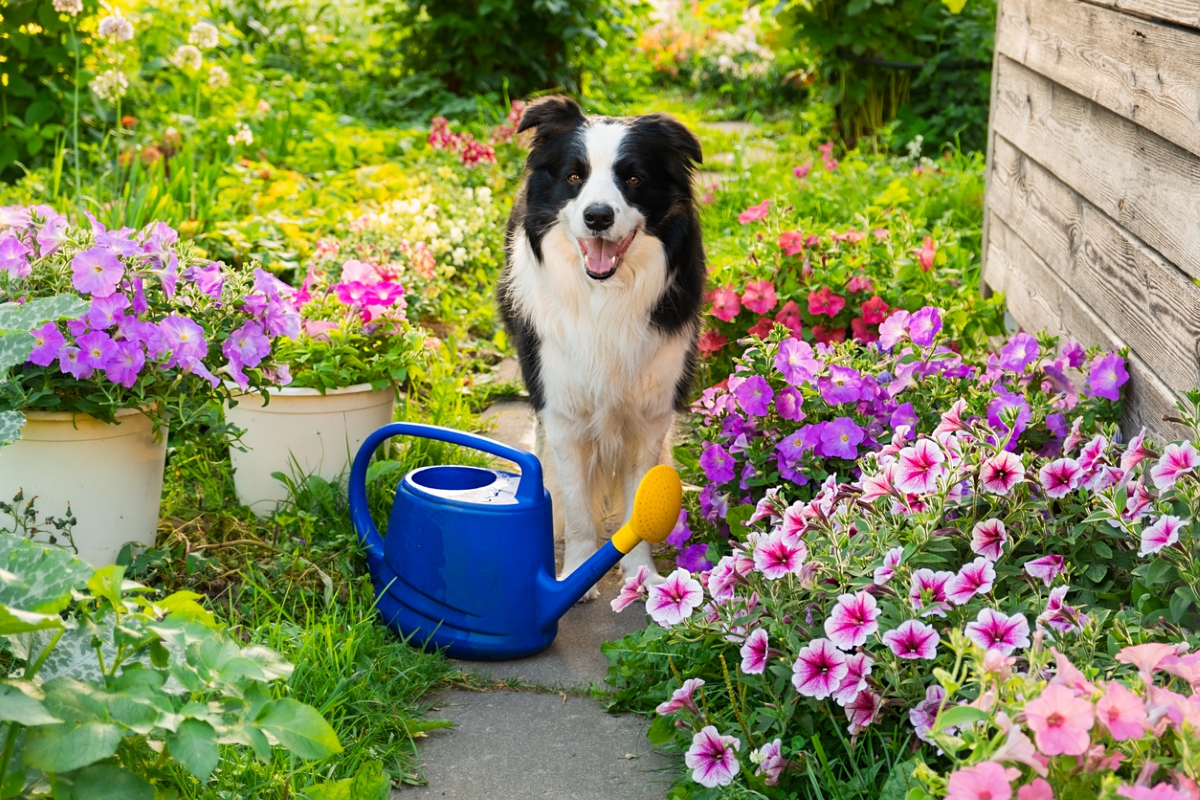

We may earn revenue from the products available on this page and participate in affiliate programs. Learn More ›
When we buy plant seeds and starters, we almost always take note of the light and soil requirements, but how often do we check and double-check whether the greenery we buy is safe for our pets?
There are many stunning plants that are unfortunately toxic for pets, including azaleas, chrysanthemums, and tulips. The degree of toxicity varies by plant, but it can often cause severe problems, including liver failure and death. It’s important to understand which plants are toxic to cats and dogs and, if you have any of the following plants or flowers in your garden or inside, consider removing them or putting up a barrier to ensure your pooches and kitties can’t reach them.
1. Amaryllis (Amaryllis spp.)
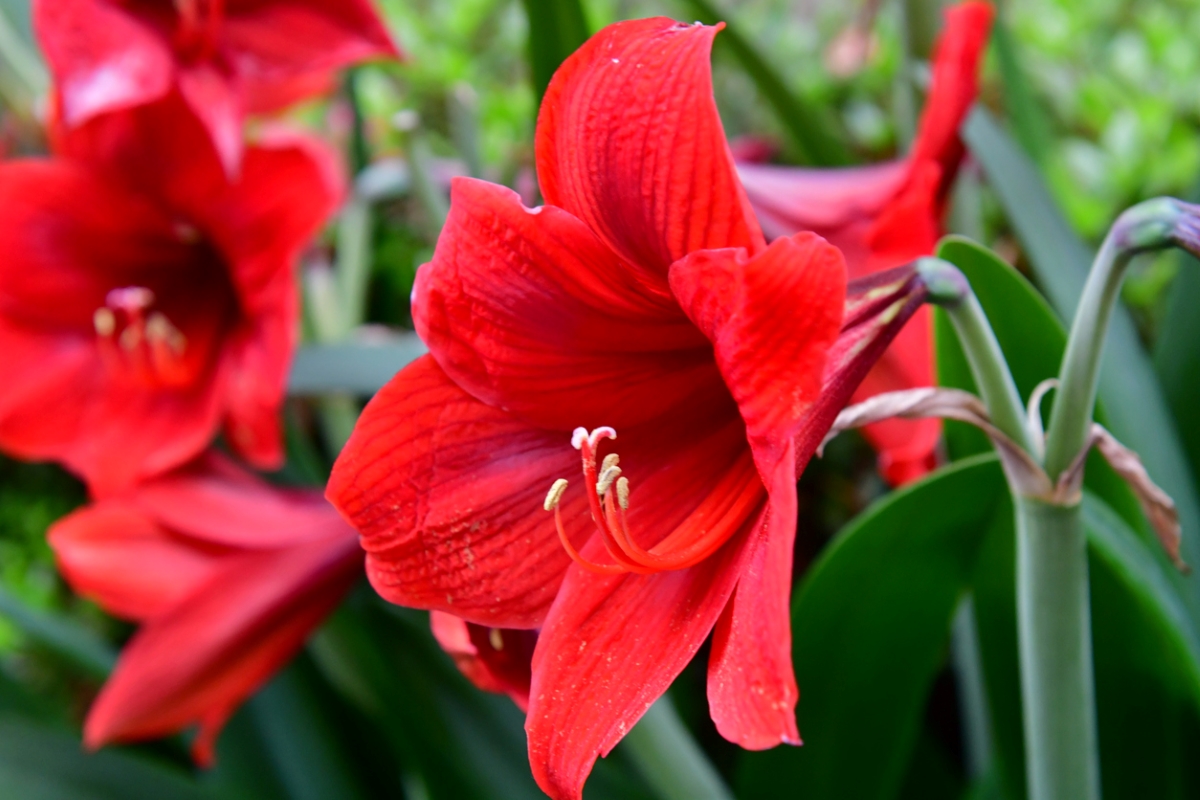
Often seen in home improvement stores and garden centers at Easter, amaryllis is a common garden plant. It features large—up to 10 inches across—trumpet-shaped flowers in red, white, or pink. Unfortunately, however, this spring beauty is among the plants poisonous to dogs and cats.
Toxic to: Dogs and cats
Side effects: Vomiting, depression, diarrhea, abdominal pain, hypersalivation, anorexia, tremors
2. Autumn Crocus (Colchicum autumnale)
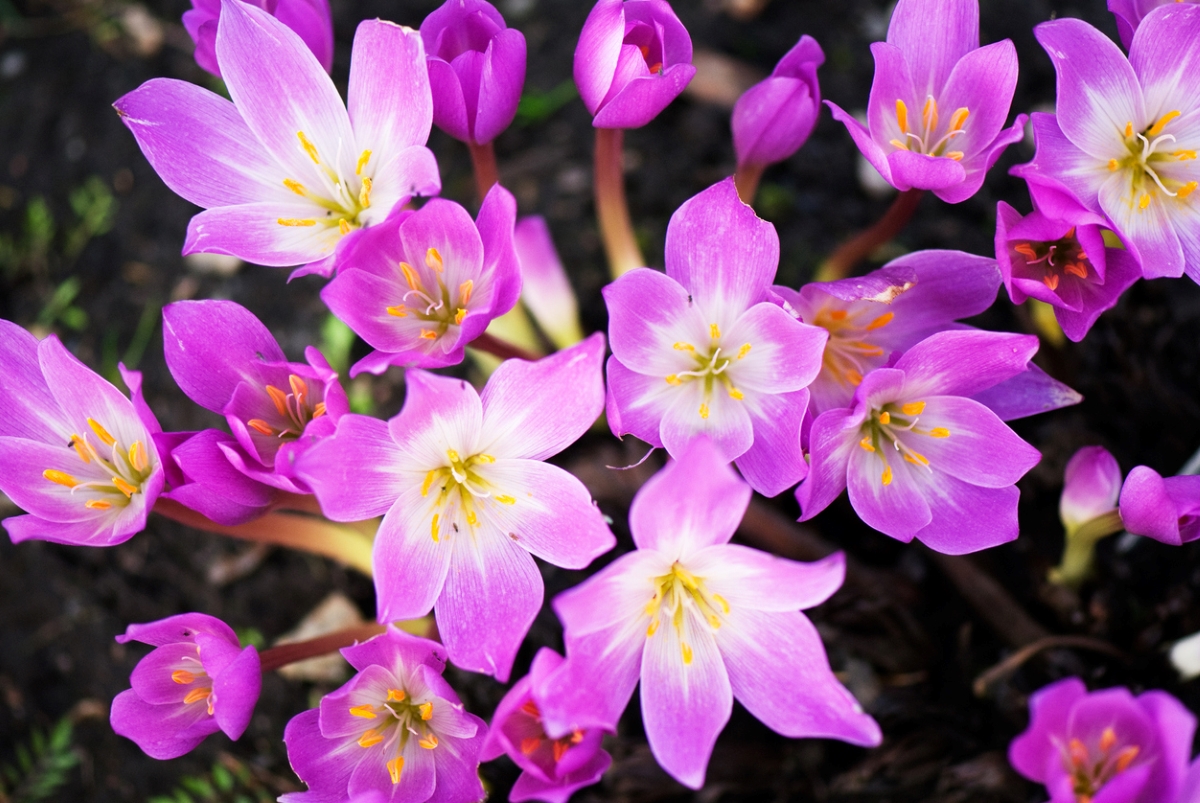
Autumn crocus looks like the true crocus that blooms in spring, but it belongs to the Colchicaceae family instead of the Iridaceae family. It features cup-shaped flowers that bloom in late summer to early fall. But this plant contains colchicine, which is highly toxic to pets.
Toxic to: Cats and dogs
Side effects: Bloody vomiting, diarrhea, shock, multi-organ damage, bone marrow suppression
3. Azalea (Rhododendron spp.)
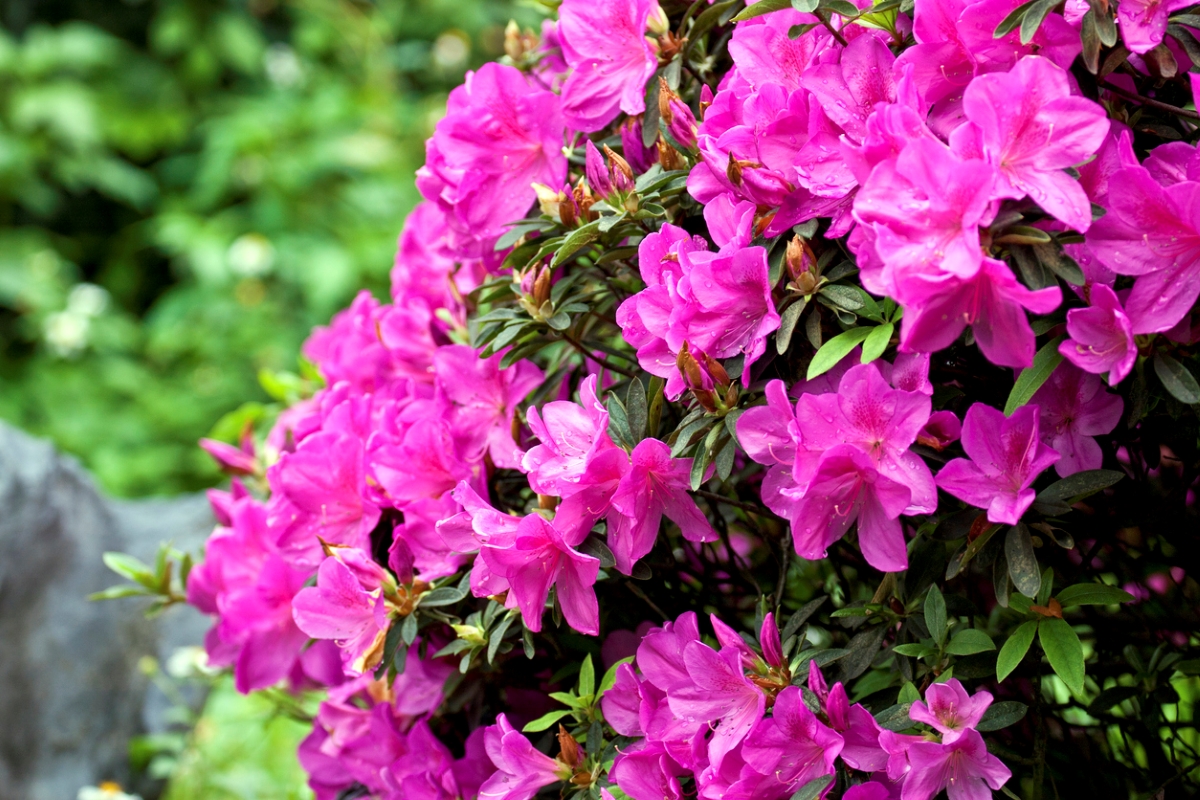
One of the most ubiquitous—and beautiful—landscaping plants is also one of the most poisonous. The entire azalea is among the plants that are toxic to dogs and cats, and it will also make horses, goats, and sheep sick. Eating just a few leaves could cause vomiting and diarrhea, and the long-term effects can be serious.
Toxic to: Dogs and cats
Side effects: Vomiting, diarrhea, weakness, cardiac failure
RELATED: 119 Plants You Should Never Grow in Your Yard
4. Buttercup (Ranunculus spp.)
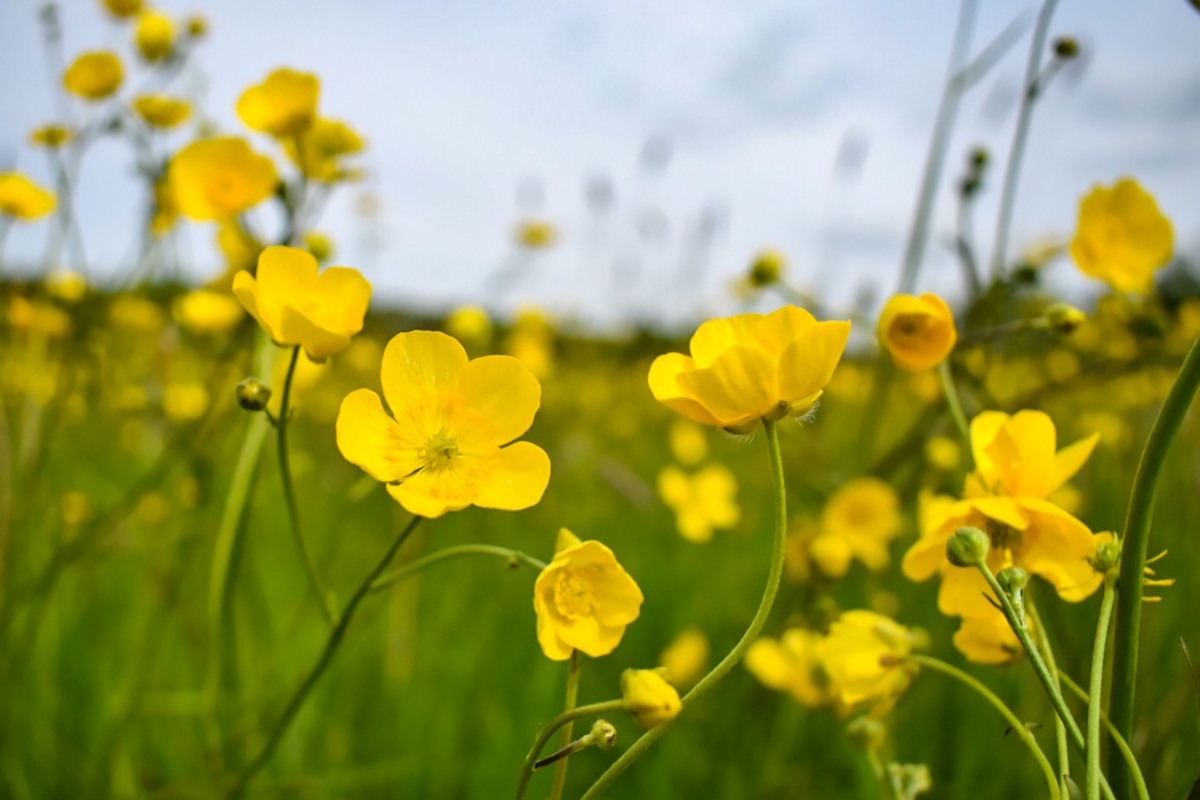
Buttercups are popular for their bright yellow flowers, which bloom in spring and summer, and their glossy petals, which give the appearance that they’re glowing. But buttercup plants contain an irritant called protoanemonin, making it among the flowers poisonous to cats and dogs, resulting in very uncomfortable side effects for pets.
Toxic to: Dogs and cats
Side effects: Vomiting, diarrhea, depression, anorexia, hypersalivation, oral ulcers, wobbly gait
5. Castor Bean (Ricinus communis)
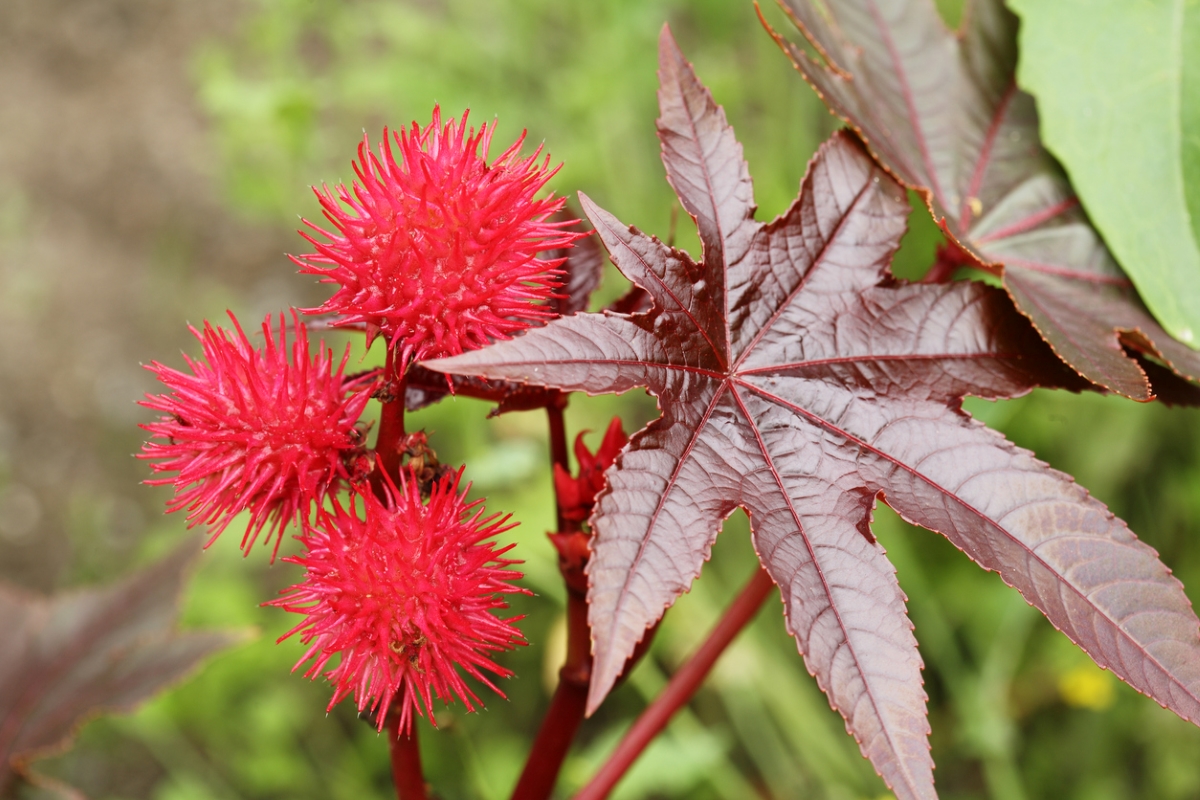
Castor bean plants are popular landscaping picks in public garden beds, loved for their colorful foliage, arresting seed pods, and the impressive height of their stems—all of which are toxic. Enjoy this plant when you see it in the city park, and avoid planting it in your own garden.
Toxic to: Dogs and cats
Side effects: Oral irritation, burning of mouth and throat, increase in thirst, vomiting, diarrhea, kidney failure, convulsions, death
RELATED: 14 of the Most Dangerous Plants in America
6. Chrysanthemum (Chrysanthemum spp.)
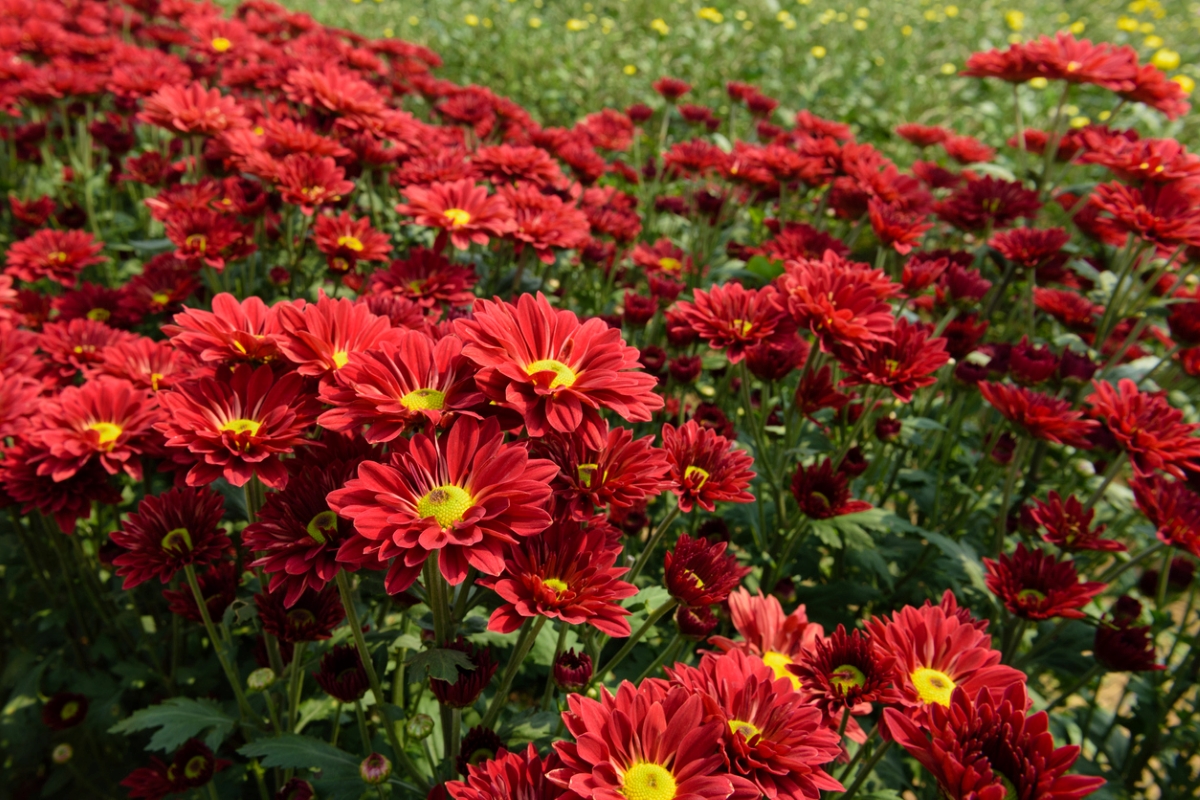
Chrysanthemum, a popular blooming flower enjoyed by so many in fall, contains pyrethrins, which are naturally occurring pesticides. If eaten by your cat or dog, it can cause nasty side effects, so if your pets are garden-curious, avoid this plant or put a fence around it to protect your little ones.
Toxic to: Dogs and cats
Side effects: Vomiting, diarrhea, hypersalivation, incoordination, dermatitis
7. Cyclamen (Cyclamen)
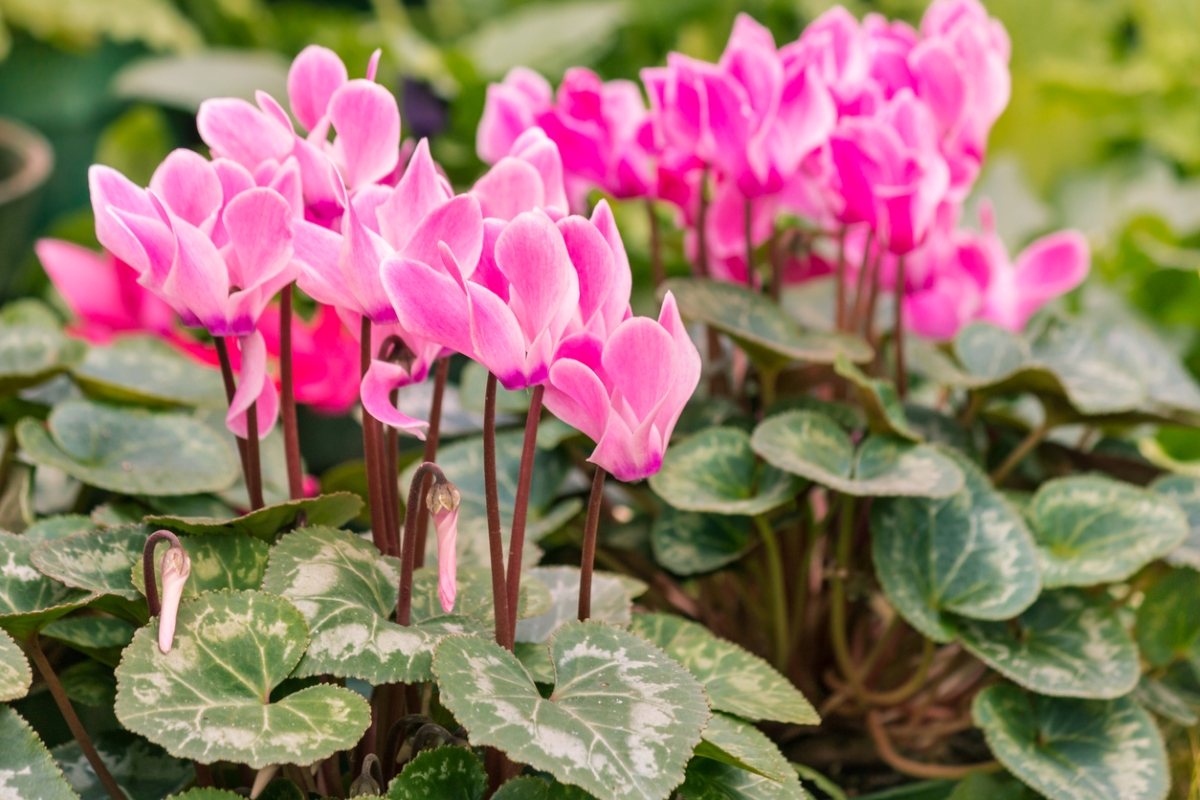
Cyclamen is a popular houseplant for its unusual foliage and colorful blooms, which might be pink, white, or purple. But even when not in bloom, this plant’s gorgeous foliage adds interest to a landscape. Just be sure to keep your pets away from it—the roots are highly poisonous.
Toxic to: Dogs and cats
Side effects: Salivation, vomiting, diarrhea. Following large ingestions of tubers: heart rhythm abnormalities, seizures, death
8. Daffodil (Narcissus spp.)
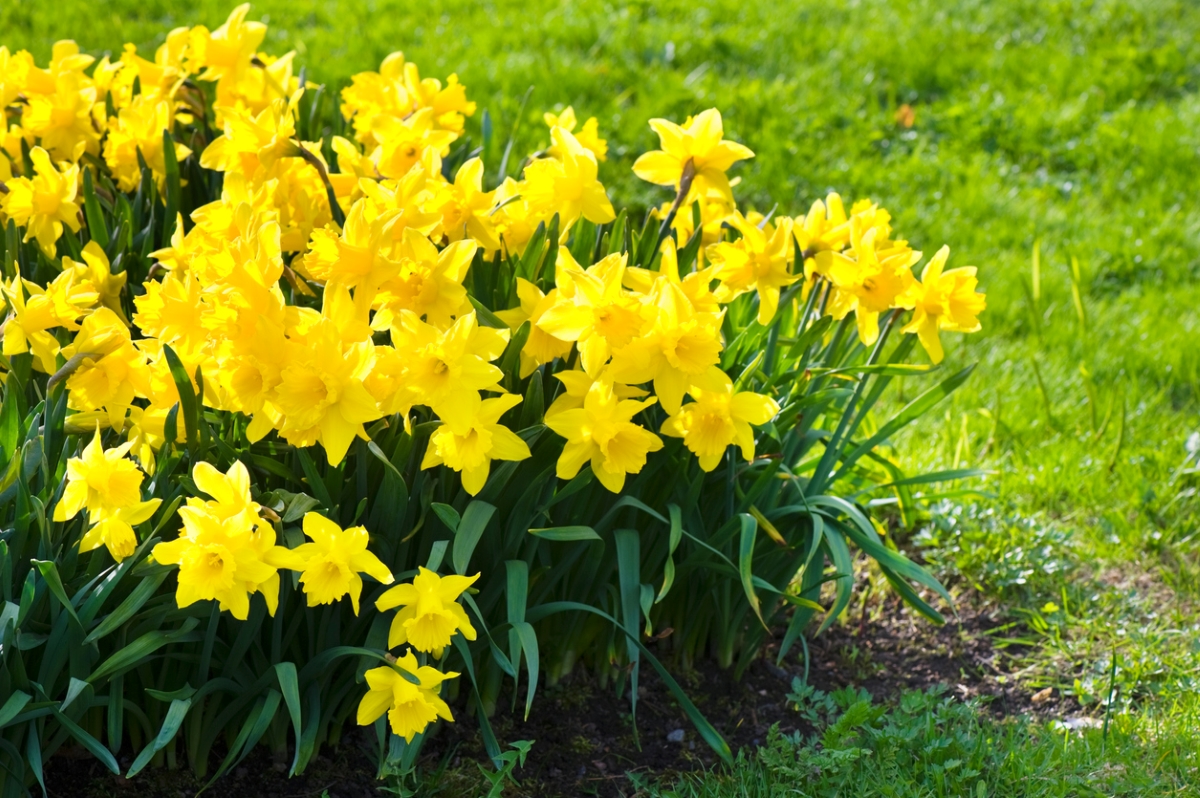
Daffodils are one of the first, cheerful signs of spring. They boast bright yellow flowers that can add a pop of gorgeous color to your landscape. But if any part of it is ingested by your pet—especially the bulb—it can cause uncomfortable side effects.
Toxic to: Dogs and cats
Side effects: Vomiting, salivation, diarrhea; large ingestions cause convulsions, low blood pressure, tremors, cardiac arrhythmias
RELATED: 13 Bulbs to Plant in Fall for Spring Crops and Color
9. Daylily (Hemerocallis spp.)
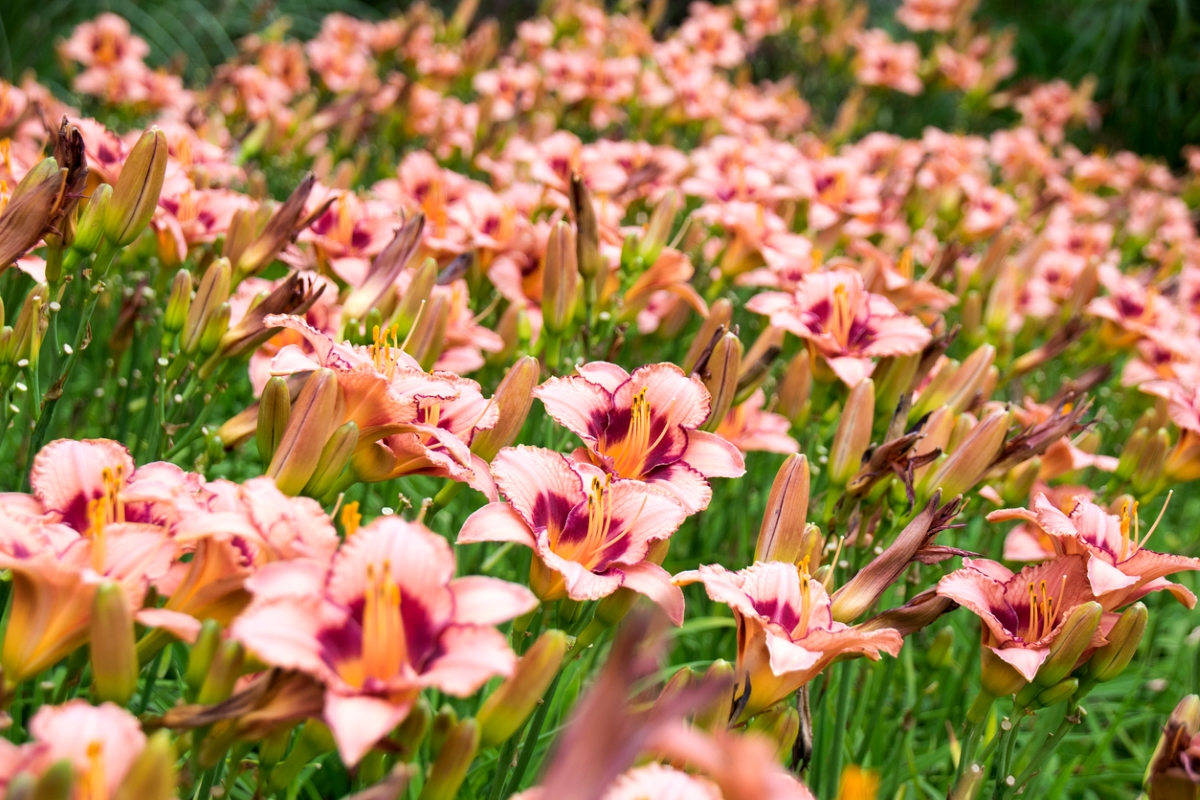
While they are not toxic to dogs, many types of lilies, including the daylily, fall in the category of poisonous plants for cats. Small portions of any part of the plant can cause kidney failure. If your feline roams outside, you might want to reconsider planting lilies in your yard, and protect indoor cats by keeping tabletop floral arrangements lily-free.
Toxic to: Cats
Side effects: Vomiting, loss of appetite, lethargy, kidney failure, death
10. Elephant Ear (Colocasia esculenta)
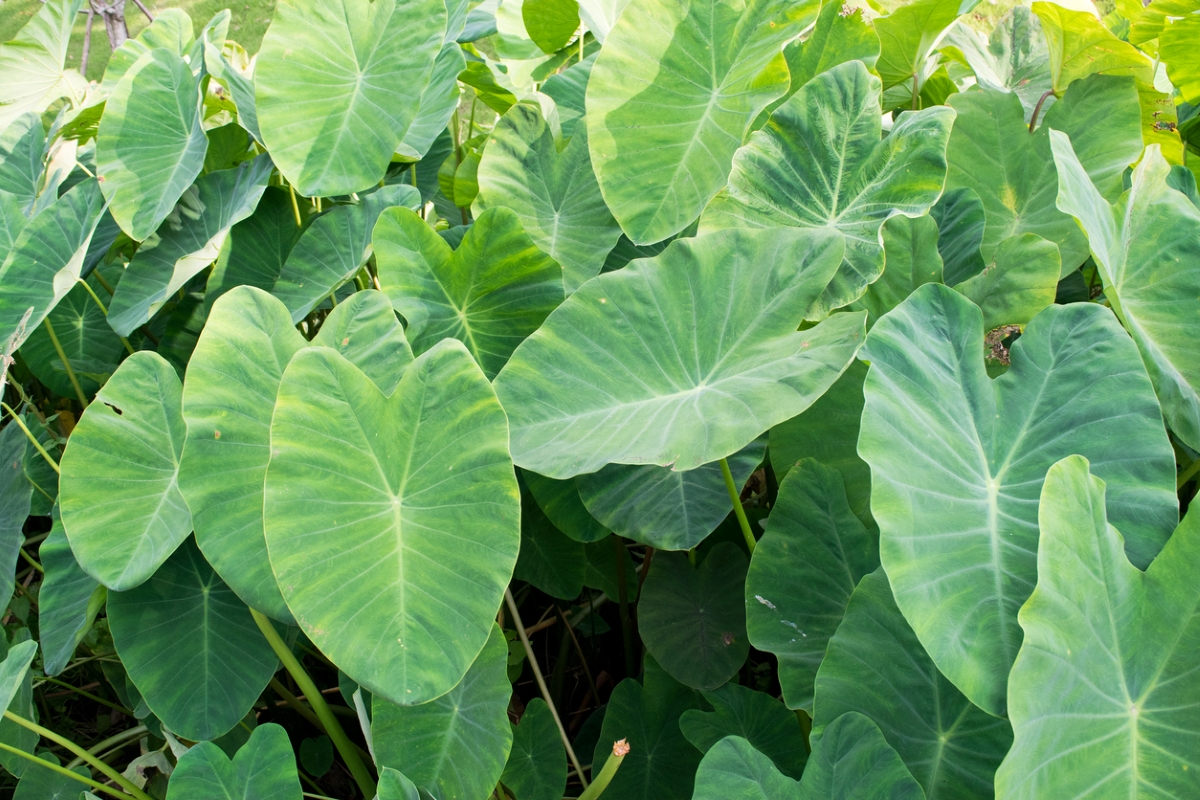
In warm climates, elephant ear can be successfully grown in the garden, but throughout the rest of the country it is more commonly known as a popular houseplant. Beautiful though it is, the plant contains calcium oxalates, which cause discomfort when ingested.
Toxic to: Dogs and cats
Side effects: Oral irritation, pain and swelling of mouth, tongue and lips, excessive drooling, vomiting, difficulty swallowing
11. English Ivy (Hedera helix)
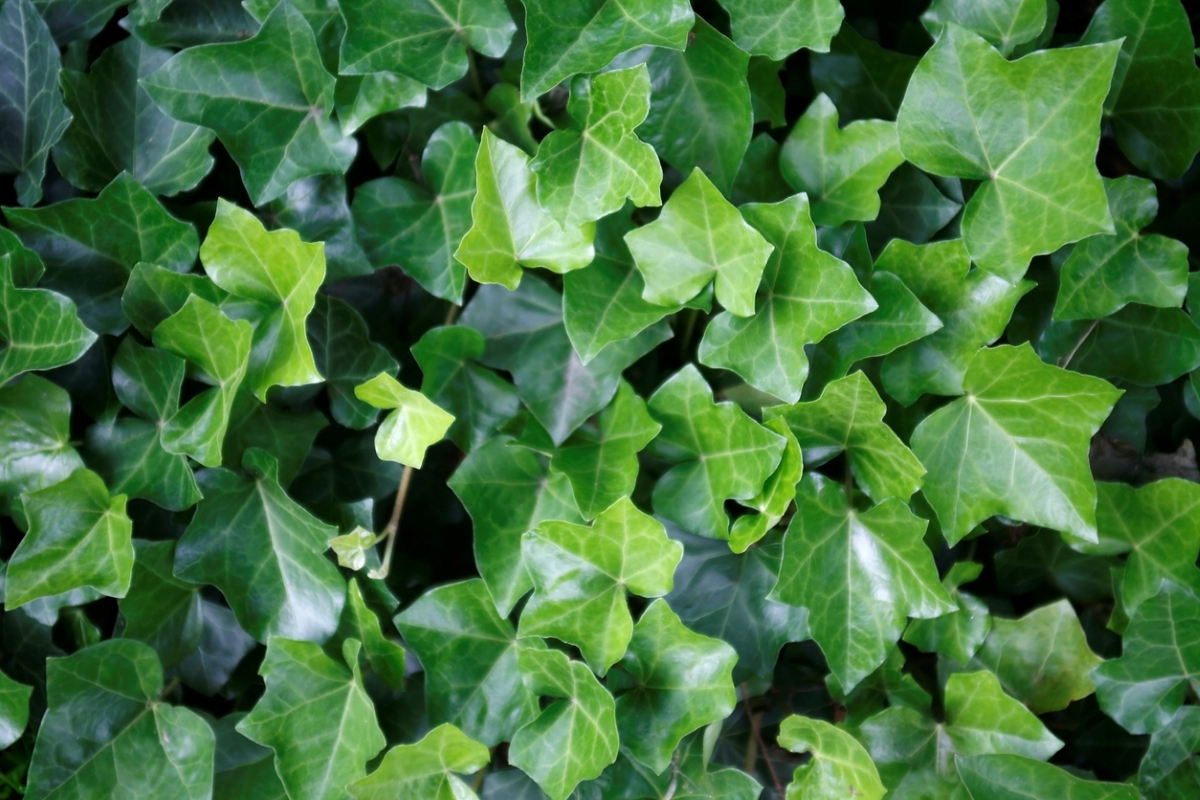
You may have already guessed that the berries of the very common English ivy are toxic to pets. But so is the rest of this vining plant, especially the leaves, which are the most toxic part. Don’t be seduced by the charm of an ivy-covered brick wall. If you have ivy, get rid of it; it’s bad for the mortar and the pets.
Toxic to: Dogs and cats
Side effects: Vomiting, abdominal pain, hypersalivation, diarrhea
12. Foxglove (Digitalis purpurea)
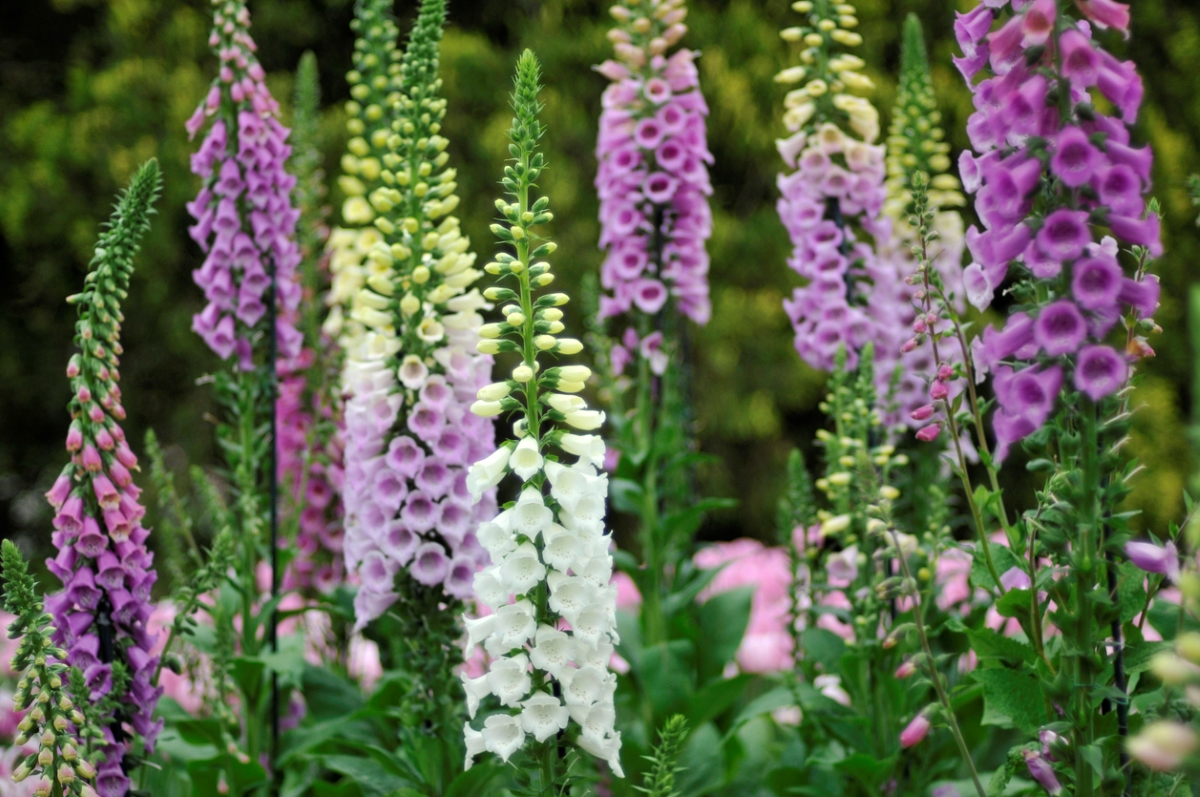
Foxglove’s pretty purple and white flowers can add visual interest to a garden, but this plant is poisonous to both pets and people. Even just a little bit of foxglove can kill a cat. In fact, the water from a vase of cut foxglove flowers is also poisonous, so don’t let cats drink from a vessel containing a foxglove bouquet.
Toxic to: Dogs and cats
Side effects: Cardiac arrhythmias, vomiting, diarrhea, weakness, cardiac failure, death
13. Giant Dumb Cane (Dieffenbachia)
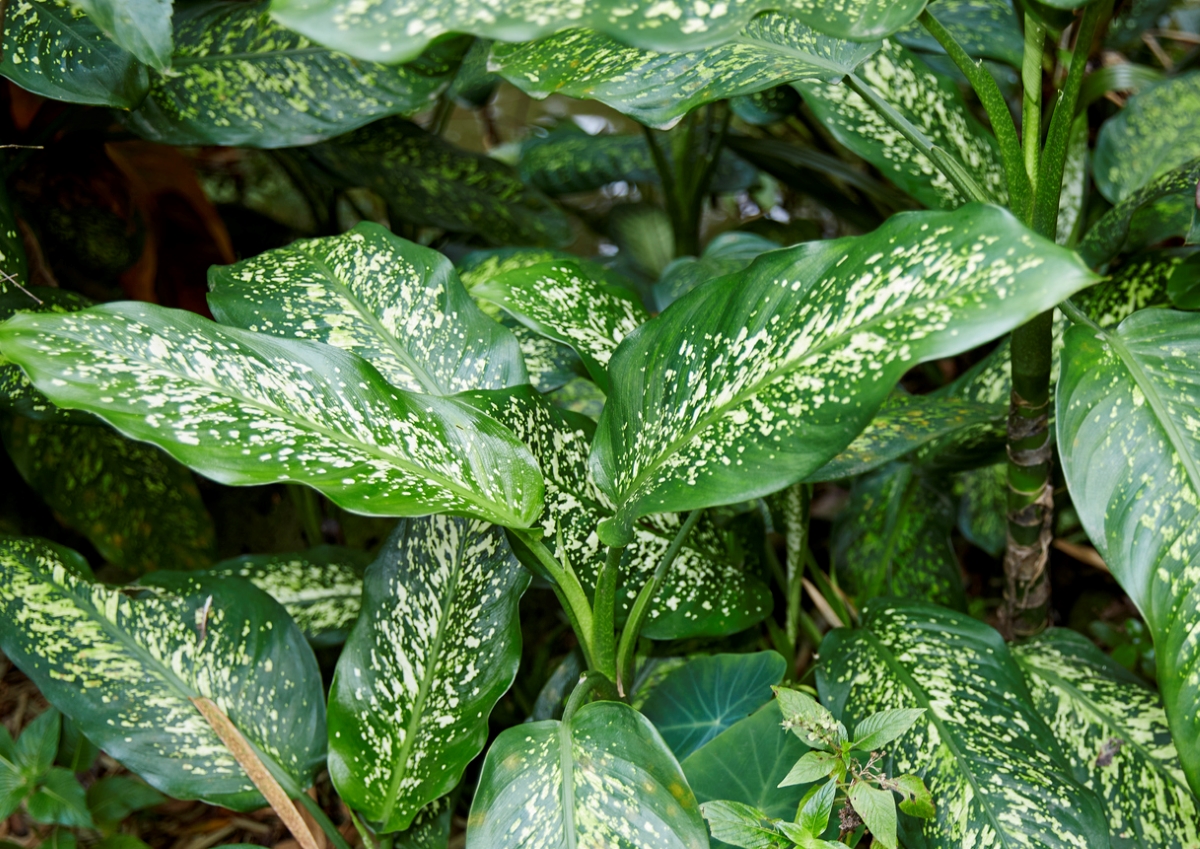
An easy-to-grow houseplant, giant dumb cane is a tropical plant with thick leaves that feature a mix of green, white, and yellow hues. The name “dumb cane” comes from the fact that chewing the plant’s leaves can cause mouth swelling, leaving one unable to speak. The plant’s calcium oxalates and proteolytic enzymes are moderately toxic to dogs and cats.
Toxic to: Dogs and cats
Side effects: Oral irritation, intense burning and irritation of mouth, tongue, and lips, excessive drooling, vomiting, difficulty swallowing
14. Heartleaf Philodendron (Philodendron hederaceum)
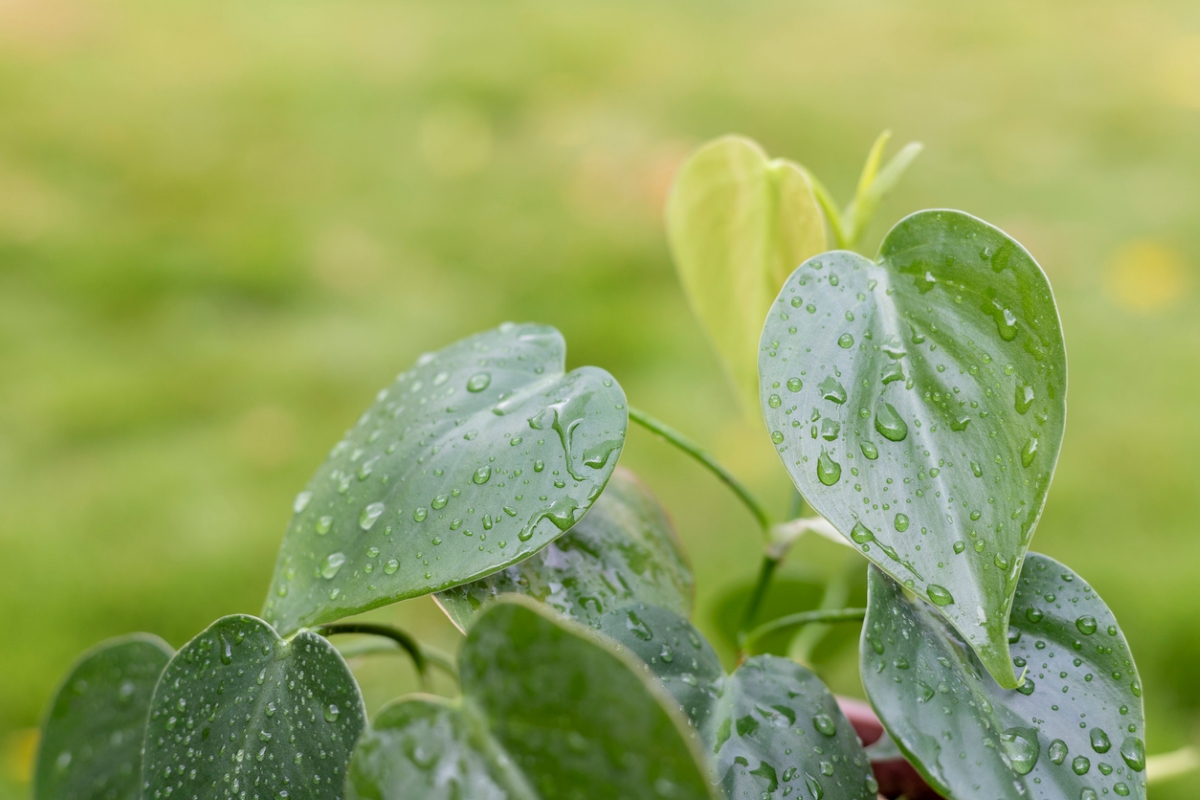
Heartleaf philodendron plants somewhat resemble pothos, with their green leafy vines. The leaves also have a subtle heart shape, hence the name. Easy to care for, they’re a popular houseplant, but their calcium oxalates make them moderately toxic to dogs and cats.
Toxic to: Dogs and cats
Side effects: Oral irritation, pain and swelling of mouth, tongue, and lips, excessive drooling, vomiting, difficulty swallowing
15. Hosta (Hosta plataginea)
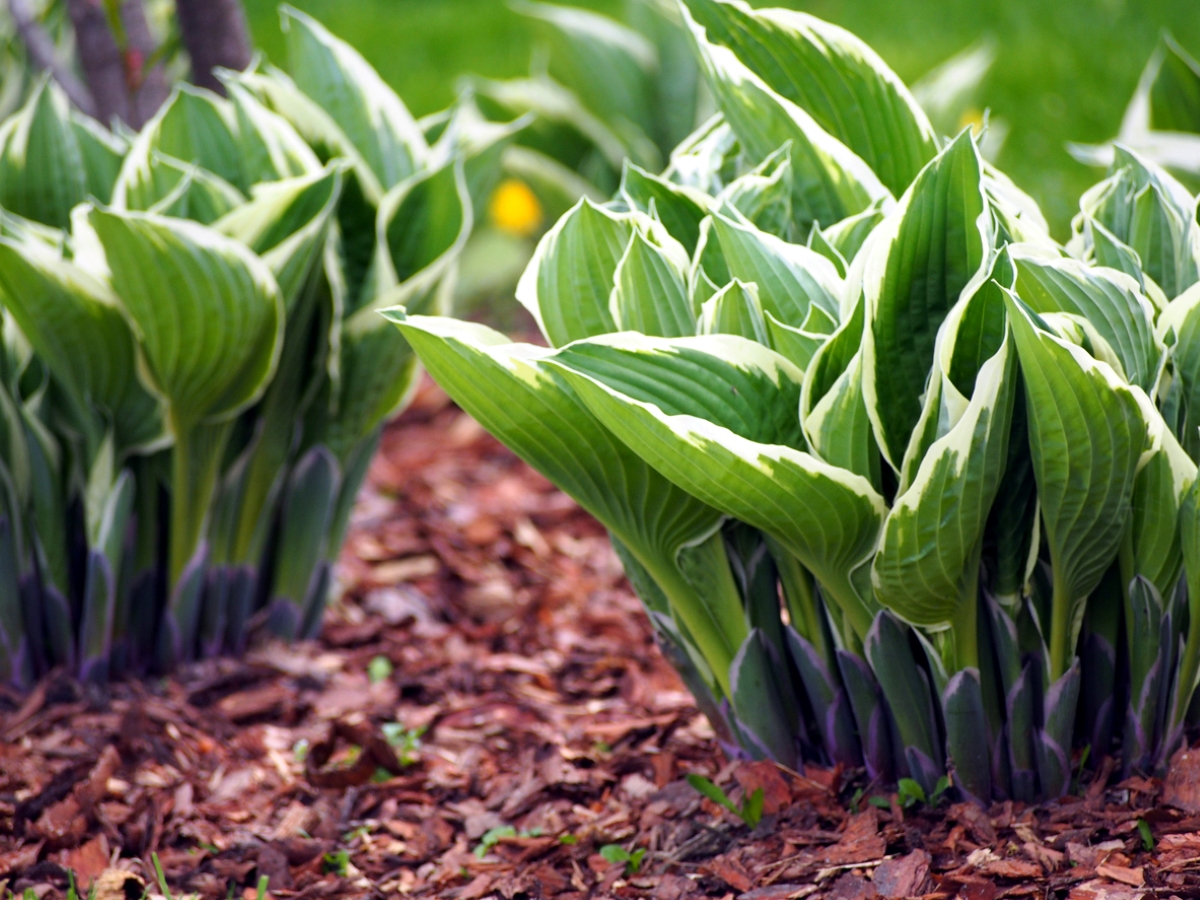
Hostas are go-to gardening staples for shady spaces, but they are moderately poisonous to both cats and dogs. If you have a curious four-legged friend at home, try a pet-friendly shade plant like coral bells.
Toxic to: Dogs and cats
Side effects: Vomiting, diarrhea, depression
RELATED: How to Split Hostas
16. Hyacinth (Hyacinthus orientalis)
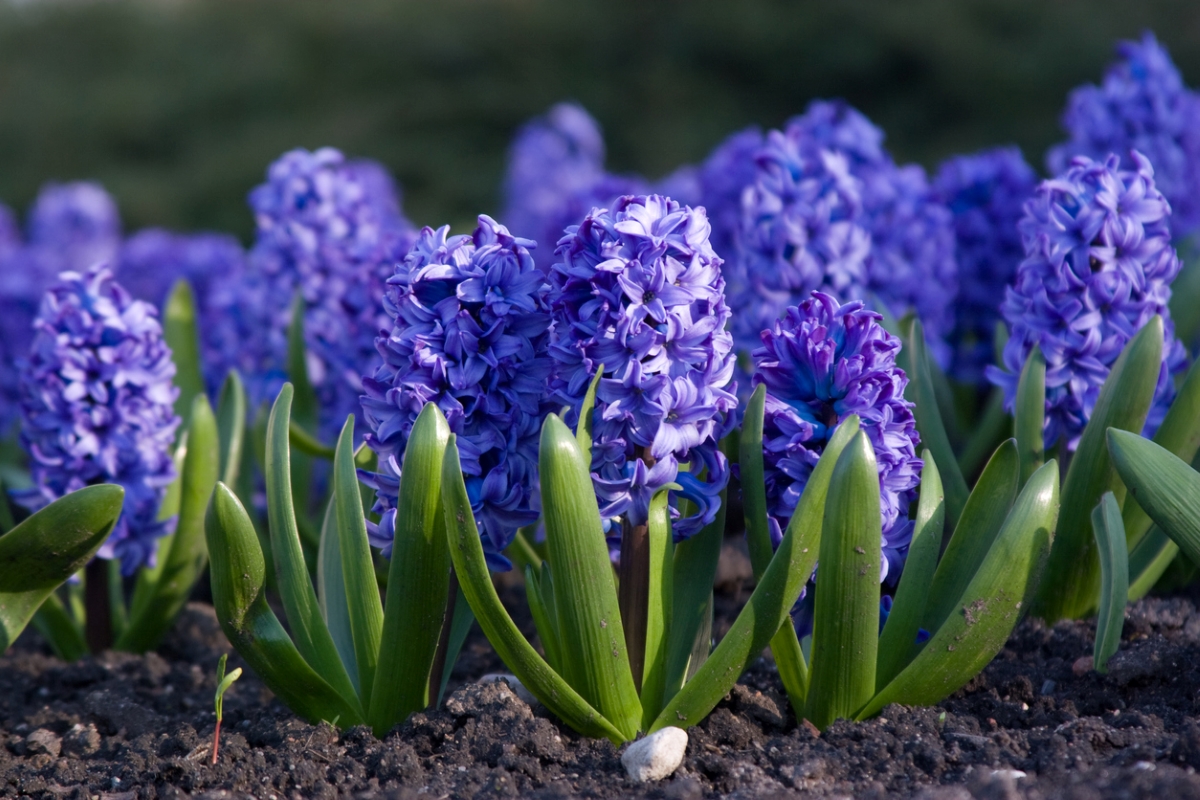
Hyacinth is loved for its lush early spring blooms and heady fragrance. Its bulbs, however, are poisonous. So, if your dog is a digger, steer clear of this and other early bloomers like snowdrops, crocuses, and daffodils.
Toxic to: Dogs and cats
Side effects: Intense vomiting, diarrhea, occasionally with blood, depression, and tremors
17. Iris (Iridaceae)
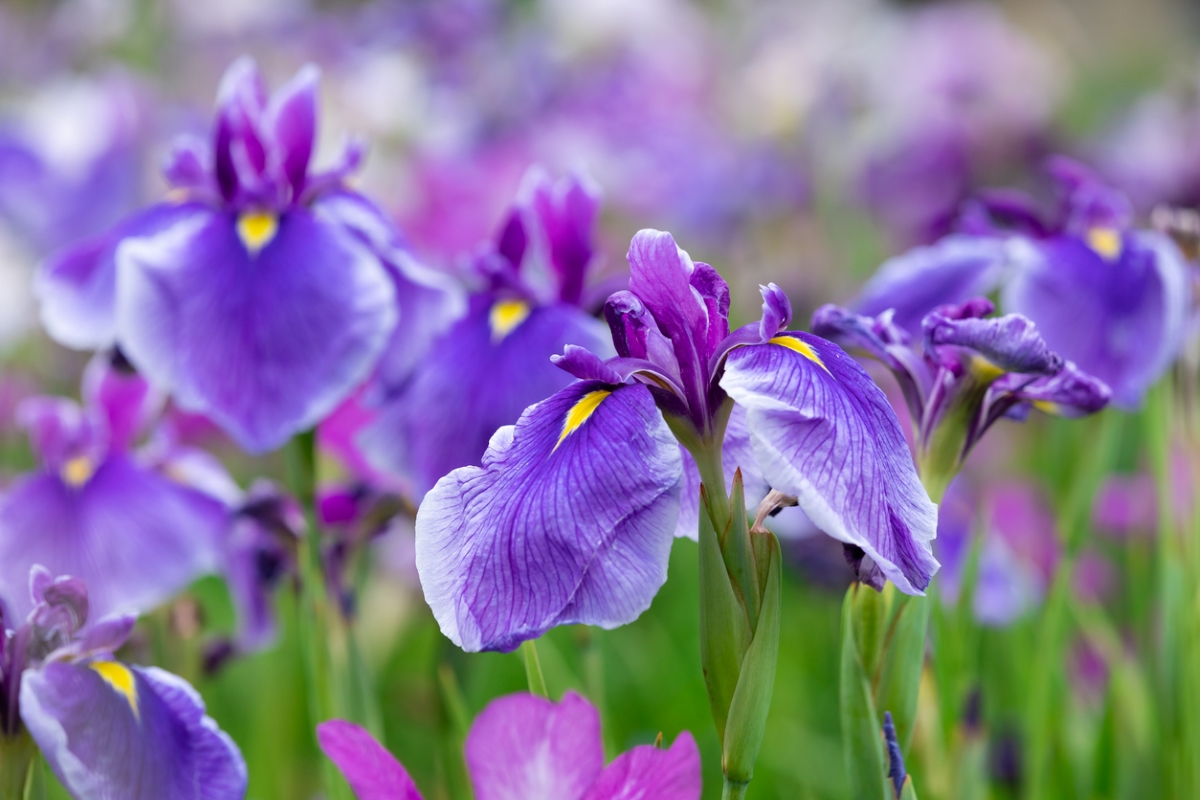
Part of the Iridaceae family, iris plants are popular for their bright purple flowers, but they contain pentacyclic terpenoids, which are toxic to dogs and cats. The bulbs are the most toxic, so dogs prone to digging may be most at risk.
Toxic to: Dogs and cats
Side effects: Salivation, vomiting, drooling,lethargy, diarrhea
18. Kalanchoe (Kalanchoe spp.)
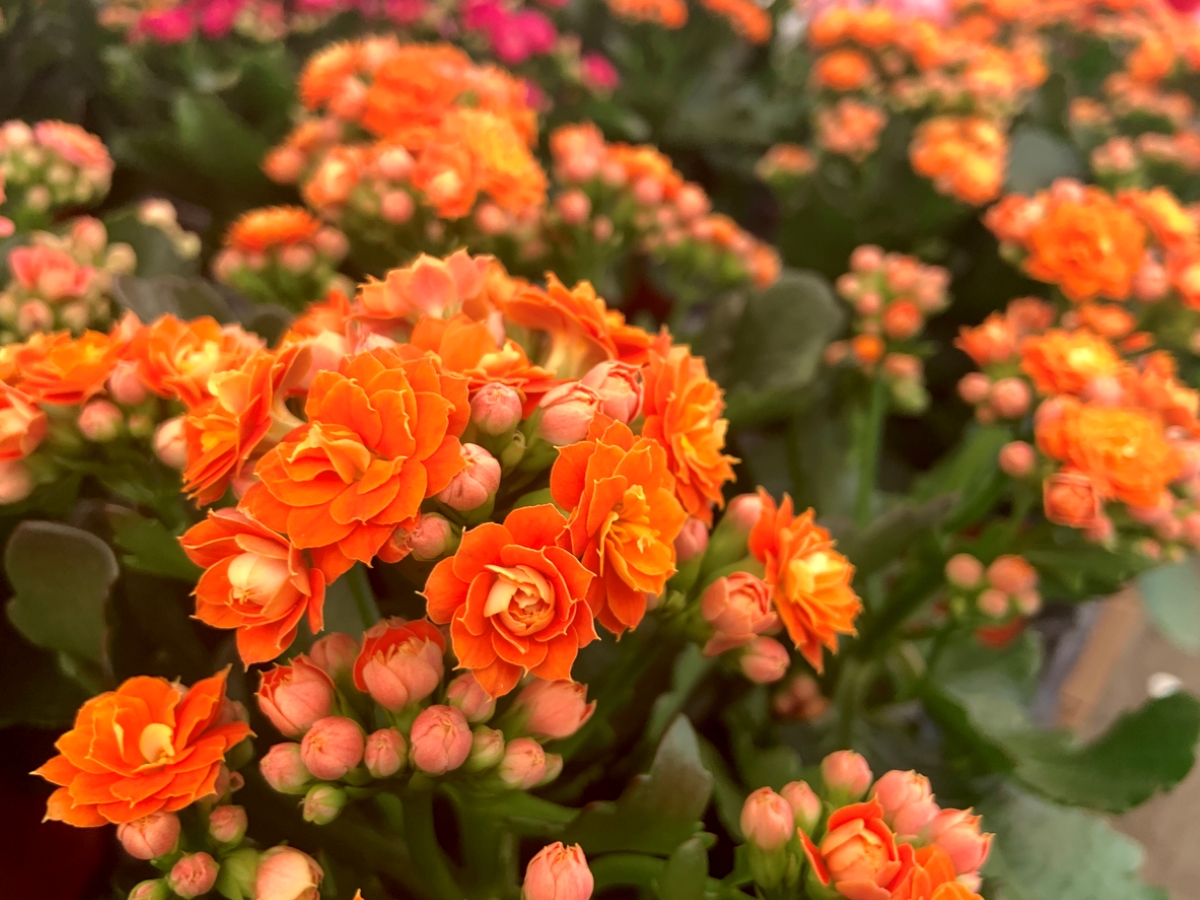
Also called devil’s backbone and chandelier plant, kalanchoe plants feature succulent leaves with long-lasting colorful flowers that can brighten up any yard. Susceptible to pests like mealy bugs, aphids, and brown scale, these plants are also moderately toxic to dogs and cats. In some cases, they can cause an abnormal heart rhythm, but it’s rare.
Toxic to: Dogs and cats
Side effects: Vomiting, diarrhea, abnormal heart rhythm (rare)
RELATED: 8 Plants Never to Grow Indoors
19. Larkspur (Delphinium)
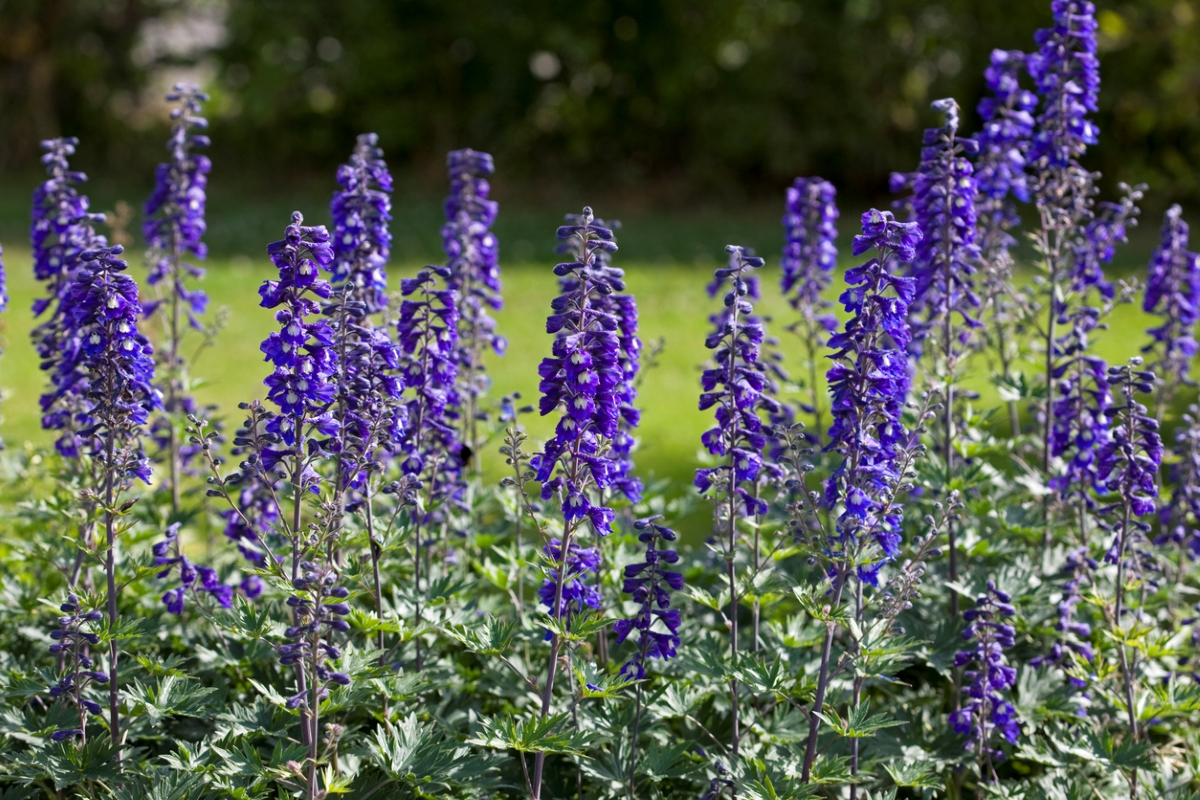
Featuring tall spiked flowers that come in a wide range of hues, larkspur adds vertical interest to gardens. But the plant is toxic to dogs, cats, and horses. In the worst case, it can cause cardiac failure and death.
Toxic to: Dogs and cats
Side effects: Neuromuscular paralysis, constipation, colic, increased salivation, muscle tremors, stiffness, weakness, recumbency, convulsions, cardiac failure, death
20. Lily of the Valley (Convallaria majalis)
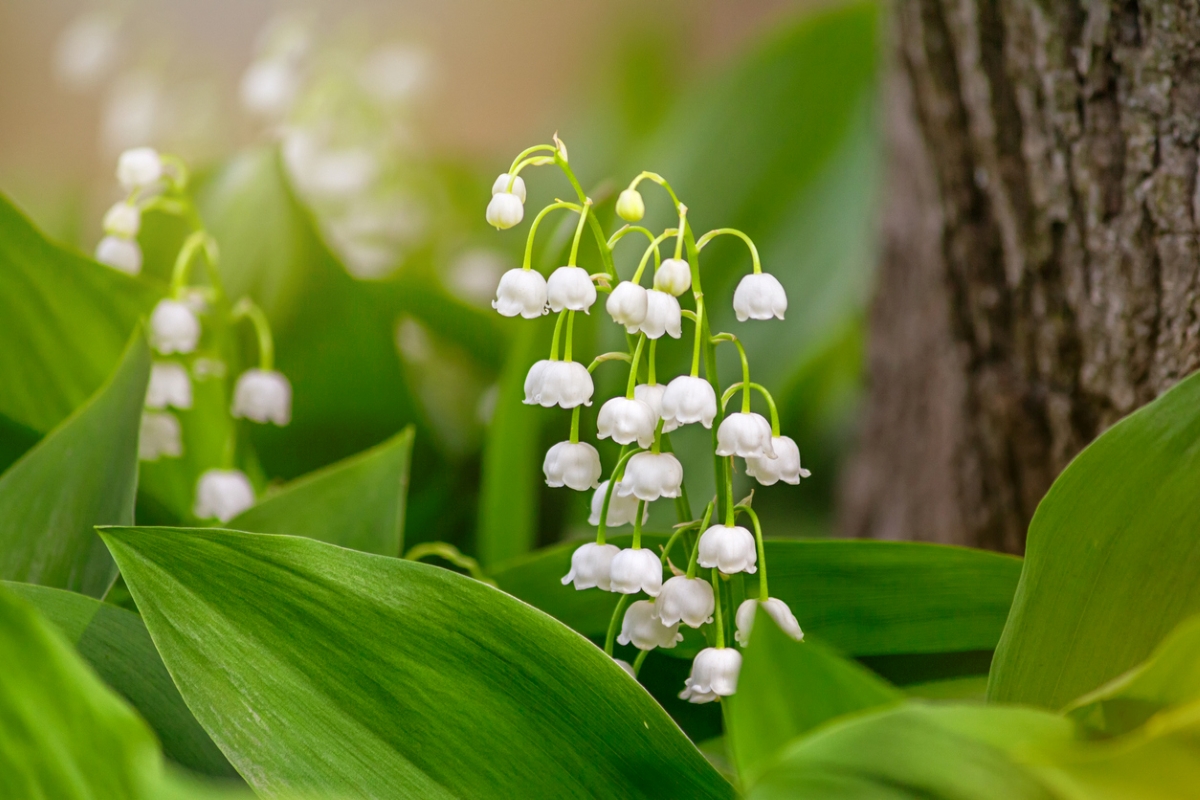
Lily of the valley plants produce small, bell-shaped flowers that are highly fragrant. However, the plant contains cardiac glycosides, which can adversely affect your pet’s health. And it’s not only poisonous to pets, it can harm children, as well.
Toxic to: Dogs and cats
Side effects: Vomiting, irregular heart beat, low blood pressure, disorientation, coma, seizures
21. Marijuana (Cannabis sativa)
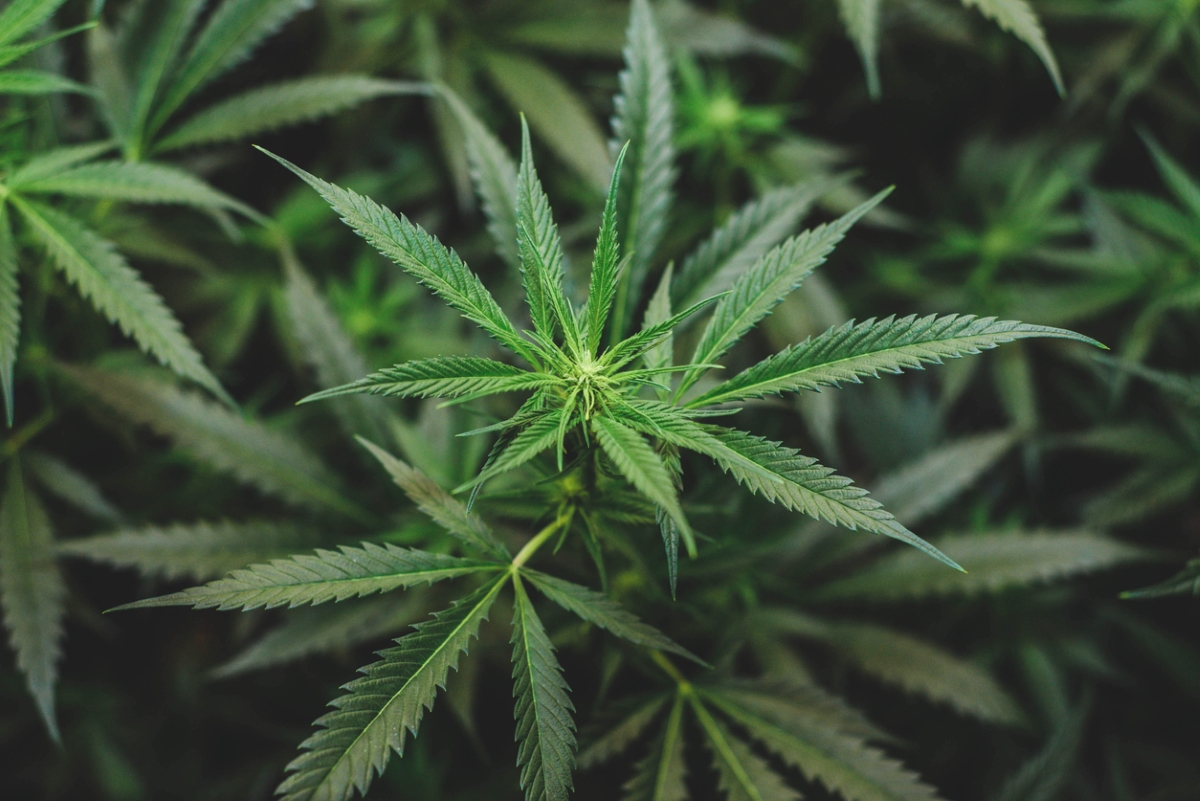
Known for its psychoactive effects, cannabis is a large annual plant. It’s edible, and many people use it for medicinal and recreational purposes. However, if you grow cannabis at home, keep it well out of reach of your pets since ingestion of tetrahydrocannabinol (THC) can cause very uncomfortable side effects, and in some rare cases can lead to death.
Toxic to: Dogs and cats
Side effects: Prolonged depression, vomiting, incoordination, sleepiness, or excitation, hypersalivation, dilated pupils, low blood pressure, low body temperature, seizure, coma, death (rare)
22. Milkweed (Asclepias species)
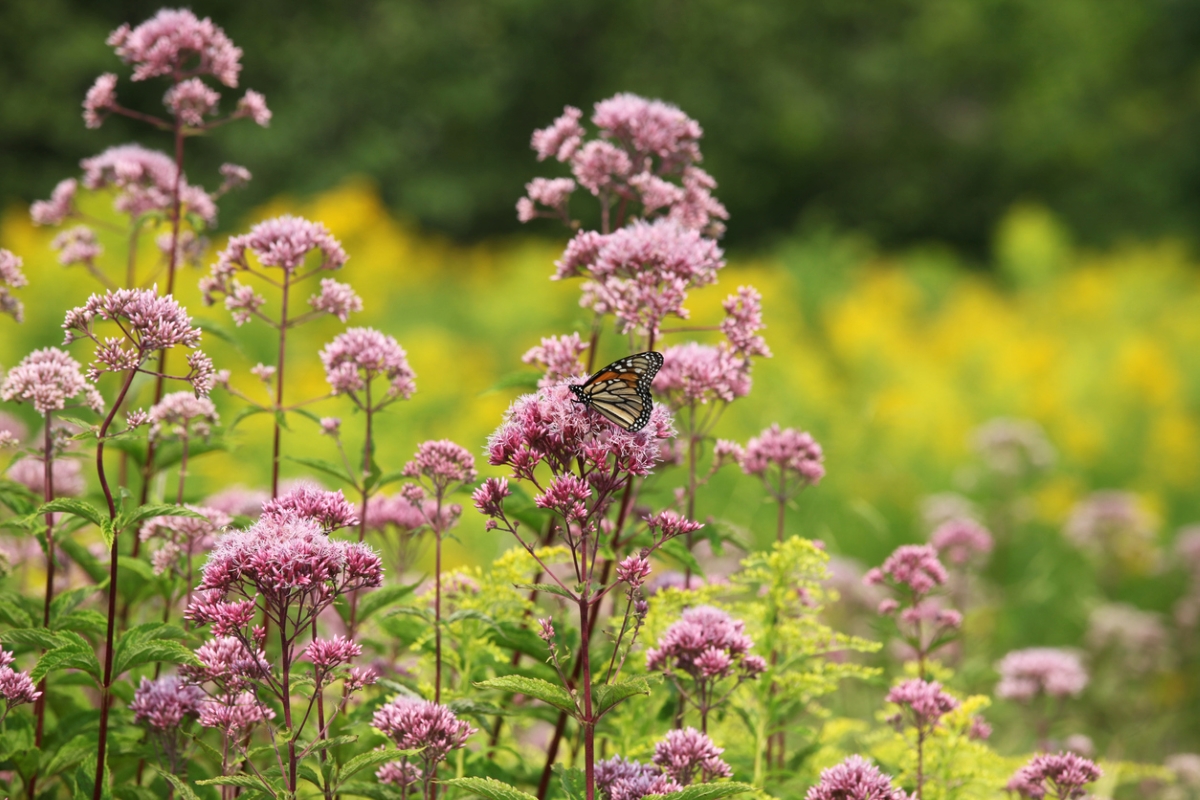
Milkweed offers precious food to monarch butterflies, which face the possibility of extinction, and it can also boost your garden with lots of colorful flowers. However, it is extremely toxic to dogs and cats, so keep it out of their reach.
Toxic to: Dogs and cats
Side effects: Vomiting, profound depression, weakness, anorexia, and diarrhea are common; may be followed by seizures, difficulty breathing, rapid, weak pulse, dilated pupils, kidney or liver failure, coma, respiratory paralysis, death
23. Morning Glory (Ipomoea spp.)

Although morning glory offers gorgeous colorful blooms, the seeds of some species contain lysergic acid, which is essentially a natural form of LSD. Avoid planting this vining plant if you own pets, and if it’s already on your property, make sure that those seed-containing flowers don’t get ingested.
Toxic to: Dogs and cats
Side effects: Vomiting, large amounts of seeds may cause hallucinations
24. Oleander (Nerium oleander)
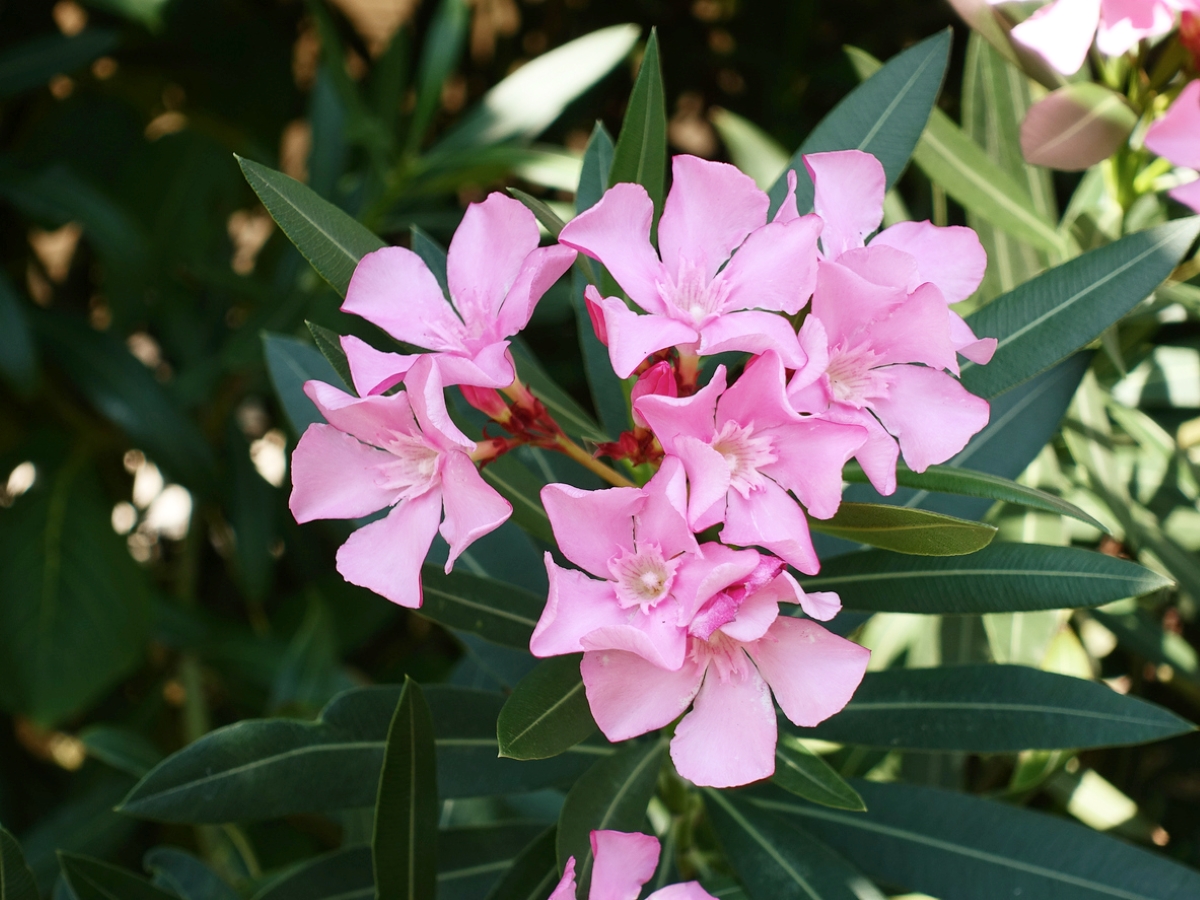
Oleander is an outdoor evergreen that thrives in warm climates. Its delicate flowers come in many colors, including pink, white, red, and yellow. Though lovely, those flowers and leaves are poisonous to both pets and humans. Cultivate oleander only if you are confident that every member of your household can keep their hands—or paws—off the plant.
Toxic to: Dogs and cats
Side effects: Drooling, abdominal pain, diarrhea, colic, depression, death
25. Oregano (Origanum vulgare hirtum)
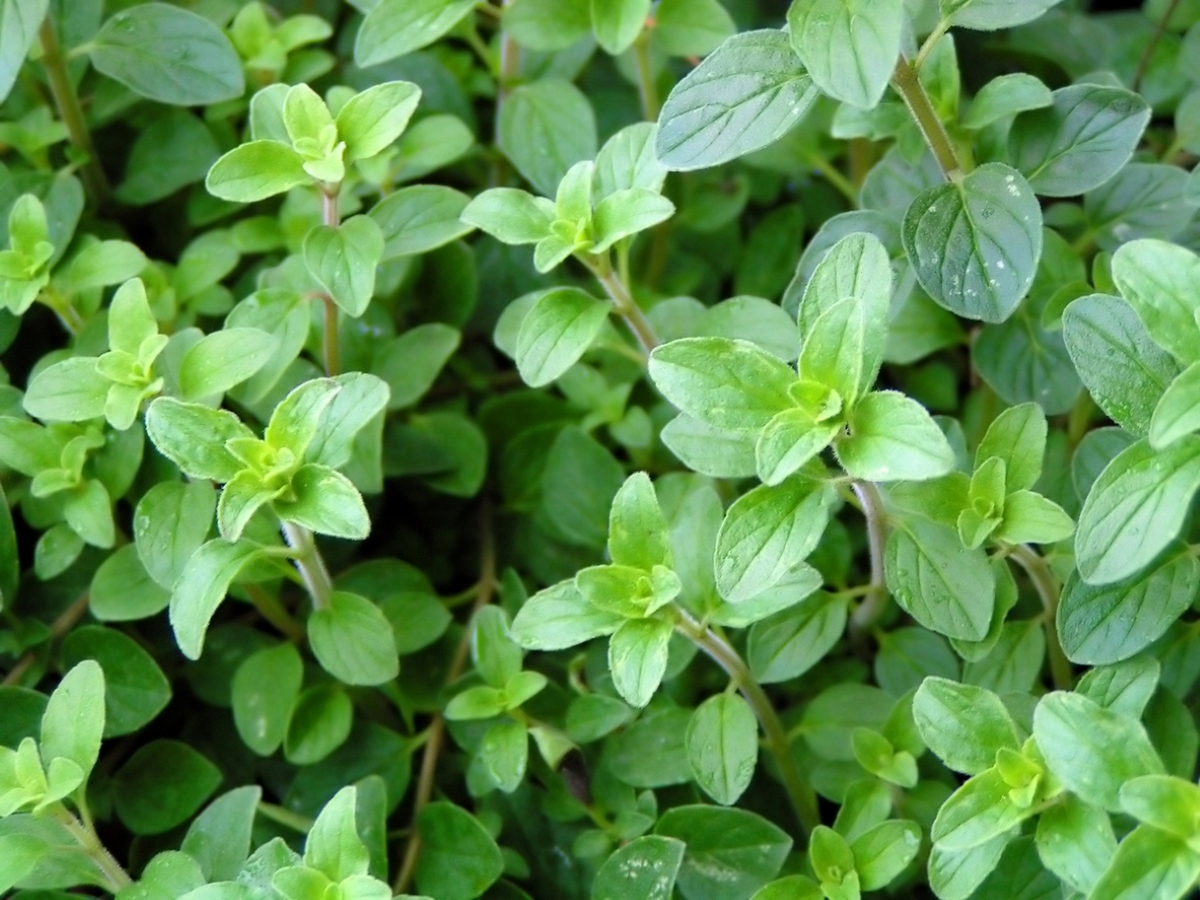
Oregano is commonly grown in herb gardens for use in cooking. Consumption by cats and dogs will cause intestinal distress, but it’s usually not severe. The essential oil, however, is far more damaging. While humans often use it as an alternative medicine, oregano essential oil should not be used for cats and dogs since it can lead to liver failure.
Toxic to: Dogs and cats
Side effects: Mild vomiting, diarrhea, liver failure
26. Poinsettia (Euphorbia pulcherrima)
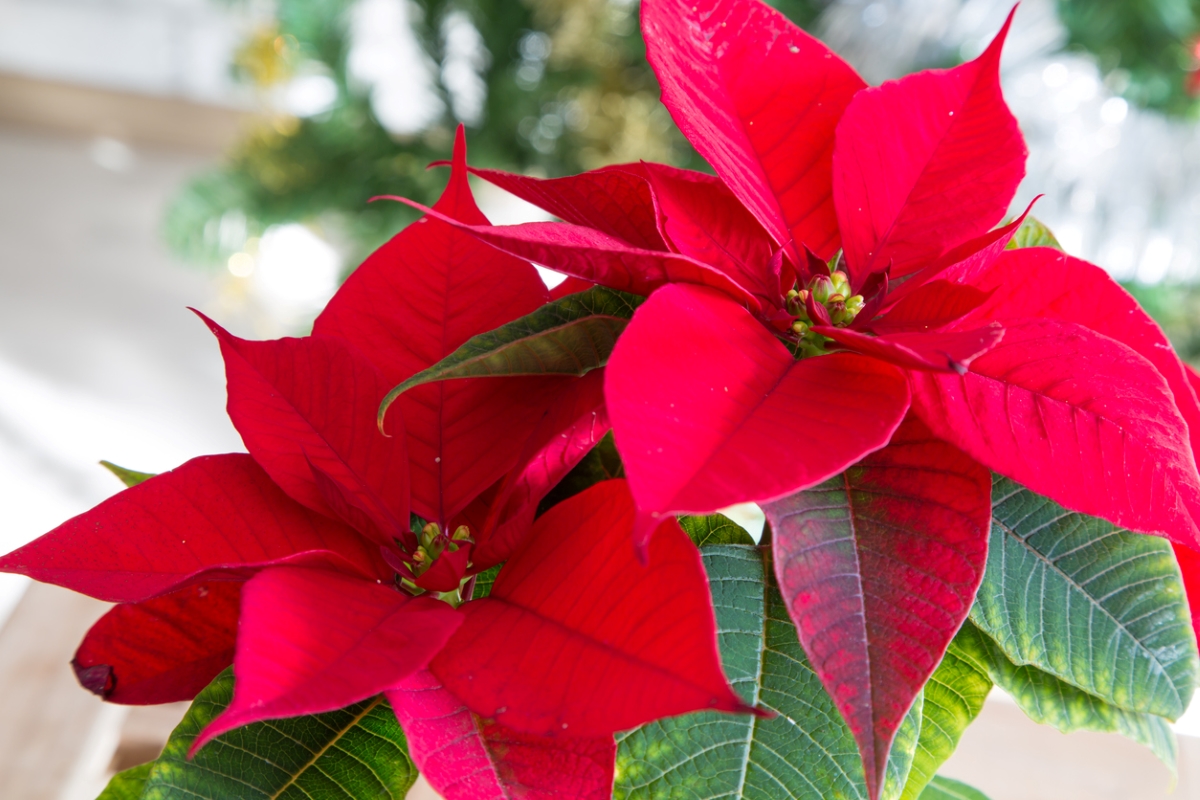
The popular holiday poinsettia has traditionally been known to be toxic to cats and dogs, and it is—but mildly in comparison to other plants on this list. The milky sap will cause skin irritation, and if ingested, it will cause mild gastrointestinal distress. But it is rarely the cause of serious poisoning. So, be mindful of your pets around them, but feel free to enjoy your poinsettias this Christmas.
Toxic to: Dogs and cats
Side effects: Irritating to the mouth and stomach, sometimes causing vomiting
27. Potato (Solanum tuberosum)
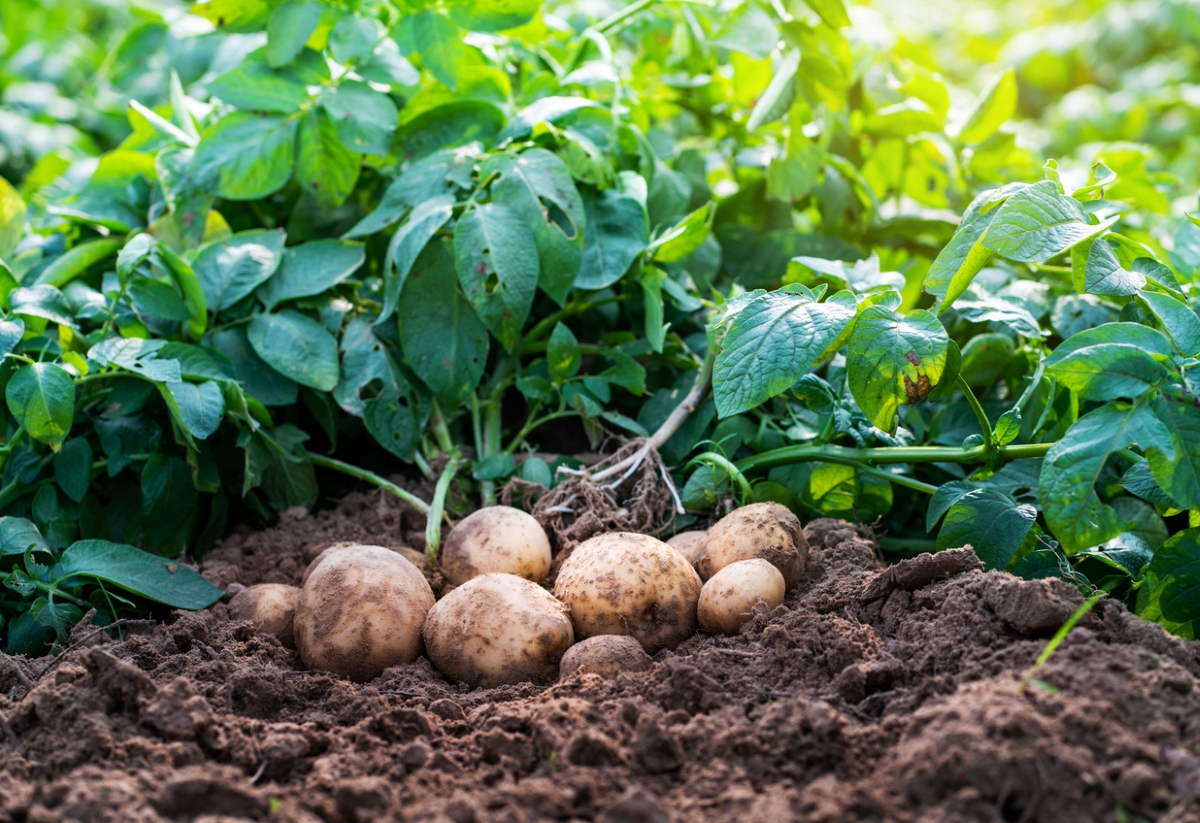
Potatoes may be a staple at your dinner table, but don’t feed raw potatoes to the dog. The potato is a nightshade, and all nightshades contain the toxic chemical solanine. Both the raw potato itself, and the green part of its plant are poisonous to your pet, so keep them well away. However, cooked potatoes are fine if given in moderation.
Toxic to: Dogs and cats
Side effects: Gastrointestinal distress
28. Pothos (Epipremnum aureum)
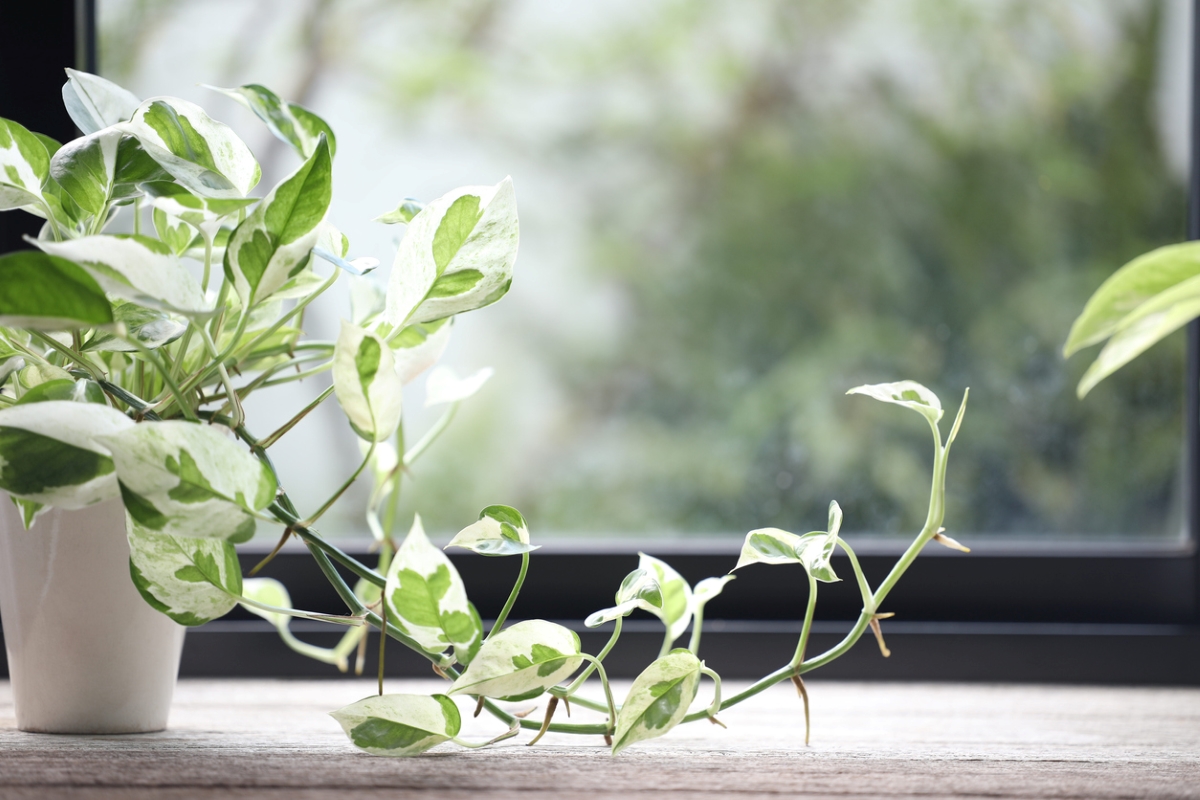
Pothos is very easy to care for and propagate, so its an incredibly popular houseplant. However, the calcium oxalates found in these plants is toxic to animals. Pothos is a quick growers with long vines that can easily drop to the ground, providing easy access for pets, so if you have four-legged family members, it’s best to avoid this plant or keep it on a very high shelf.
Toxic to: Dogs and cats
Side effects: Gastrointestinal distress, oral irritation, excessive swallowing, burning of mouth and tongue
RELATED: 10 Pothos Varieties for Your Easy-Care Houseplant Collection
29. Rhododendron (Rhododendron spp)
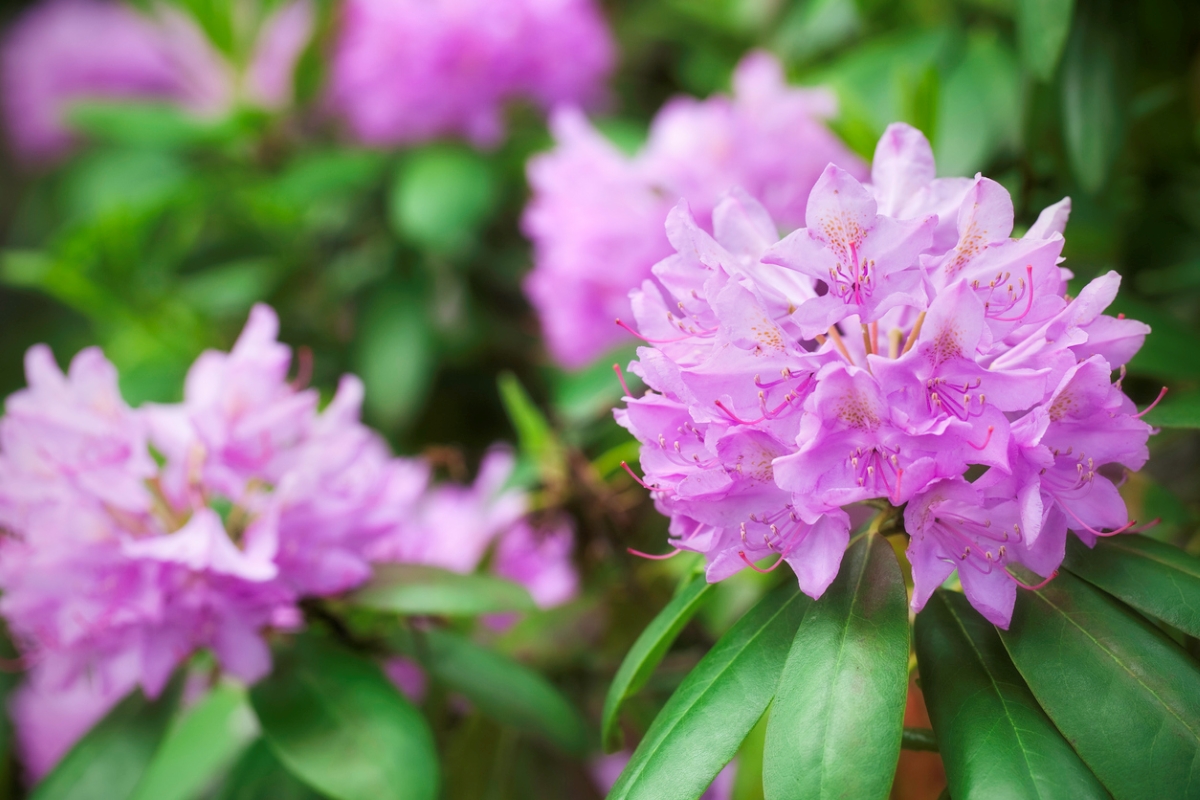
Featuring large vibrant flowers and thick leathery leaves, rhododendron plants are a great way to add color to your landscape. They typically bloom in late spring, with flowers that come in a variety of hues, including purple, red, pink, and white. But they contain a toxin called grayanotoxin, which is highly toxic to dogs and cats, potentially causing death.
Toxic to: Dogs and cats
Side effects: Vomiting, diarrhea, hypersalivation, weakness, coma, hypotension, CNS depression, cardiovascular collapse, death
30. Sago Palm (Cycas revoluta)
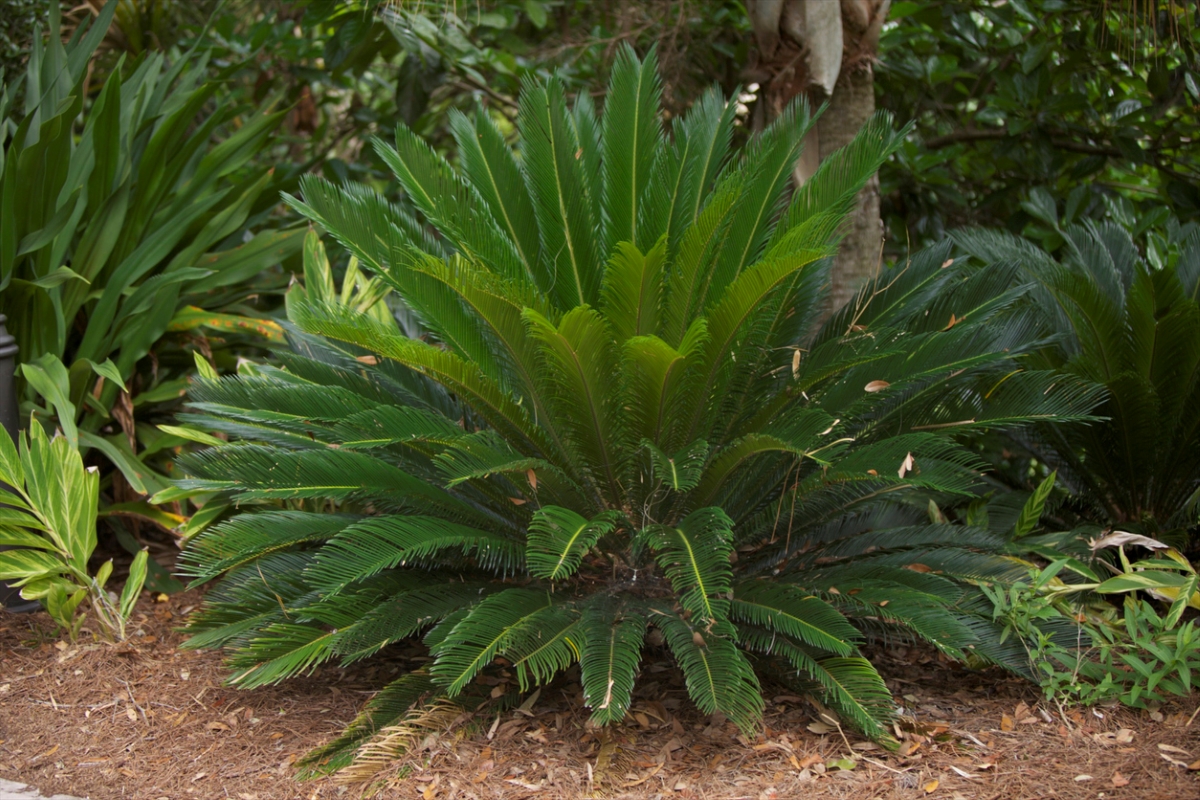
Sago palms feature a thick trunk and a crown of glossy fronds that resemble palms, but they’re not a true palm. They’re a low-maintenance plant that prefers indirect sunlight. While attractive, sago palms are incredibly toxic to dogs, cats, and humans due to containing cycasin, the ingestion of which can lead to death.
Toxic to: Dogs and cats
Side effects: Vomiting, increased thirst, liver failure, hemorrhagic gastroenteritis, bruising, coagulopathy, death
RELATED: Our Favorite Fertilizer for Palm Trees Only Needs to be Applied 4 Times a Year
31. Schefflera (Schefflera)
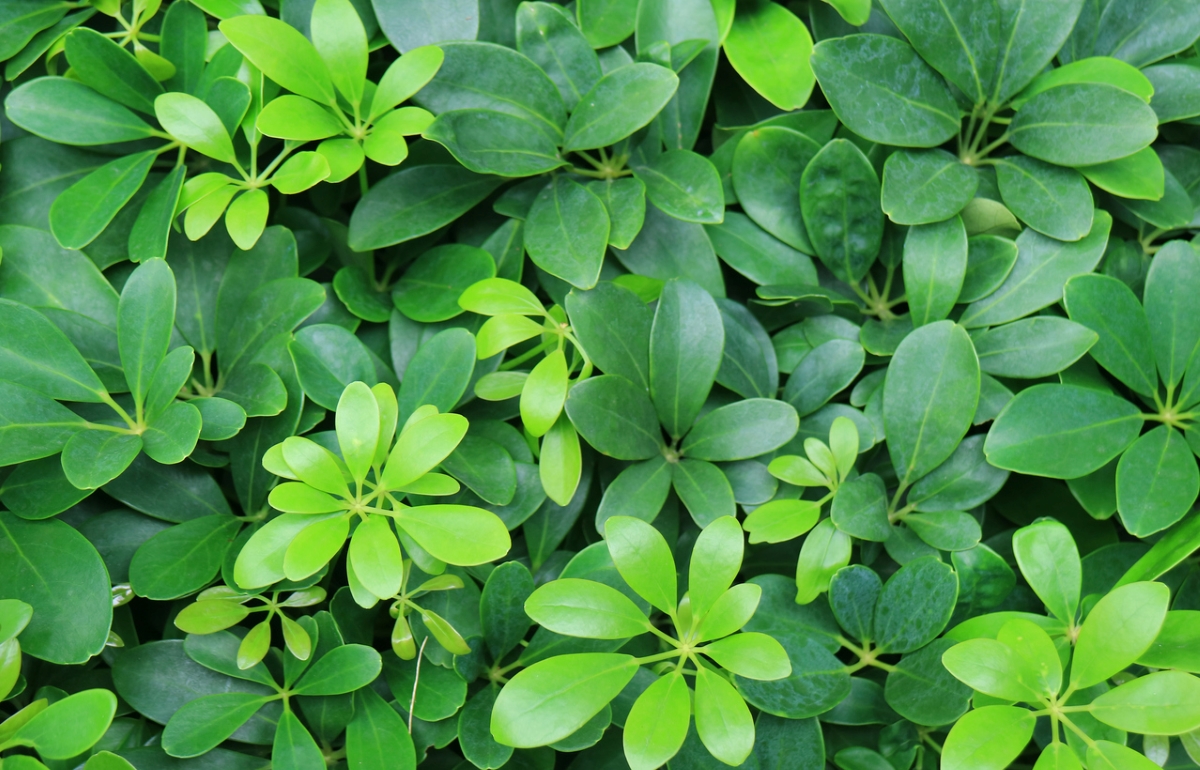
A tropical tree that’s often grown as a houseplant, schefflera, also called Australian ivy palms, features bright green groups of leaves. This plant flowers in its natural habitat, but they don’t typically flower as houseplants. Schefflera plants contain calcium oxalate crystals, which are moderately toxic to dogs and cats.
Toxic to: Toxic to dogs and cats
Side effects: Oral irritation, intense burning and irritation of the mouth, lips, and tongue, excessive drooling, vomiting, difficulty swallowing
32. Snake Plant (Sansevieria trifasciata)
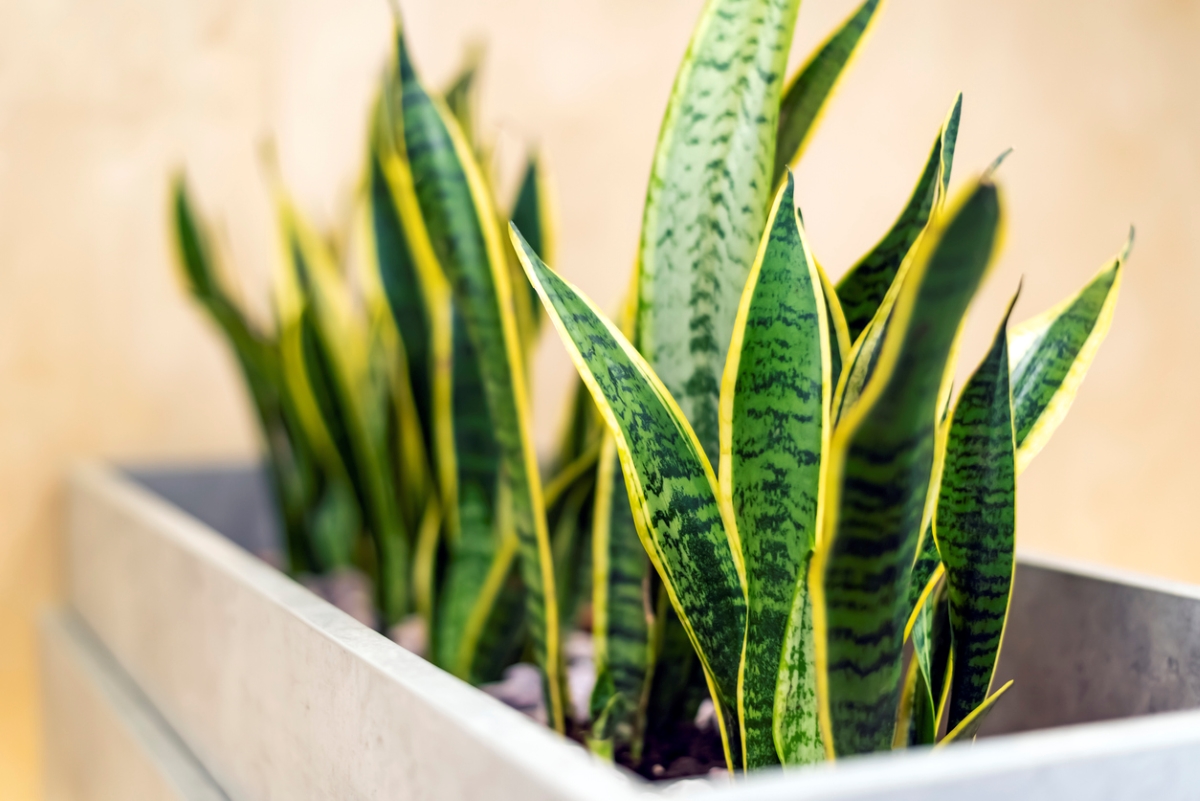
Snake plants feature sword-like leaves with a striking pattern that makes for an eye-catching houseplant. They’re also low maintenance and thrive in low-light conditions, requiring only infrequent watering. But they’re moderately toxic to dogs and cats due to containing a chemical compound called saponin, which defends the plant against fungi, microbes, and herbivores.
Toxic to: Dogs and cats
Side effects: Nausea, vomiting, diarrhea
RELATED: 15 Snake Plant Varieties for Low-Maintenance Living Decor
33. Tulips (Tulipa spp.)
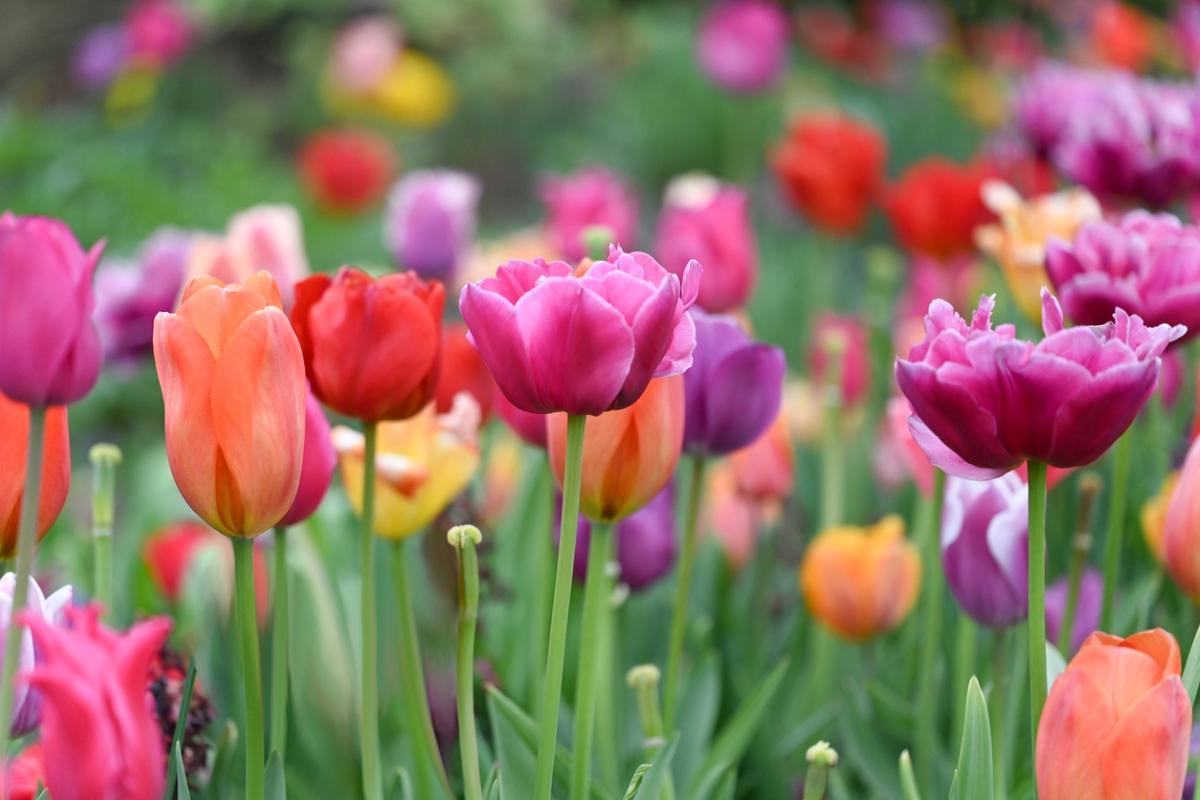
Tulips are beloved for their vibrant bell-shaped flowers. Sprouting up from a bulb in the spring, they’re usually planted as outdoor flowers, but their cuttings make for beautiful bouquets when placed inside in a vase. Tulips are toxic to dogs and cats due to toxins called tulipalin A and tulipalin B, the highest concentration of which is in the bulb, so when burying bulbs for planting, make sure they’re out of your pet’s reach.
Toxic to: Dogs and cats
Side effects: Vomiting, depression, diarrhea, hypersalivation
34. Wisteria (Wisteria spp.)
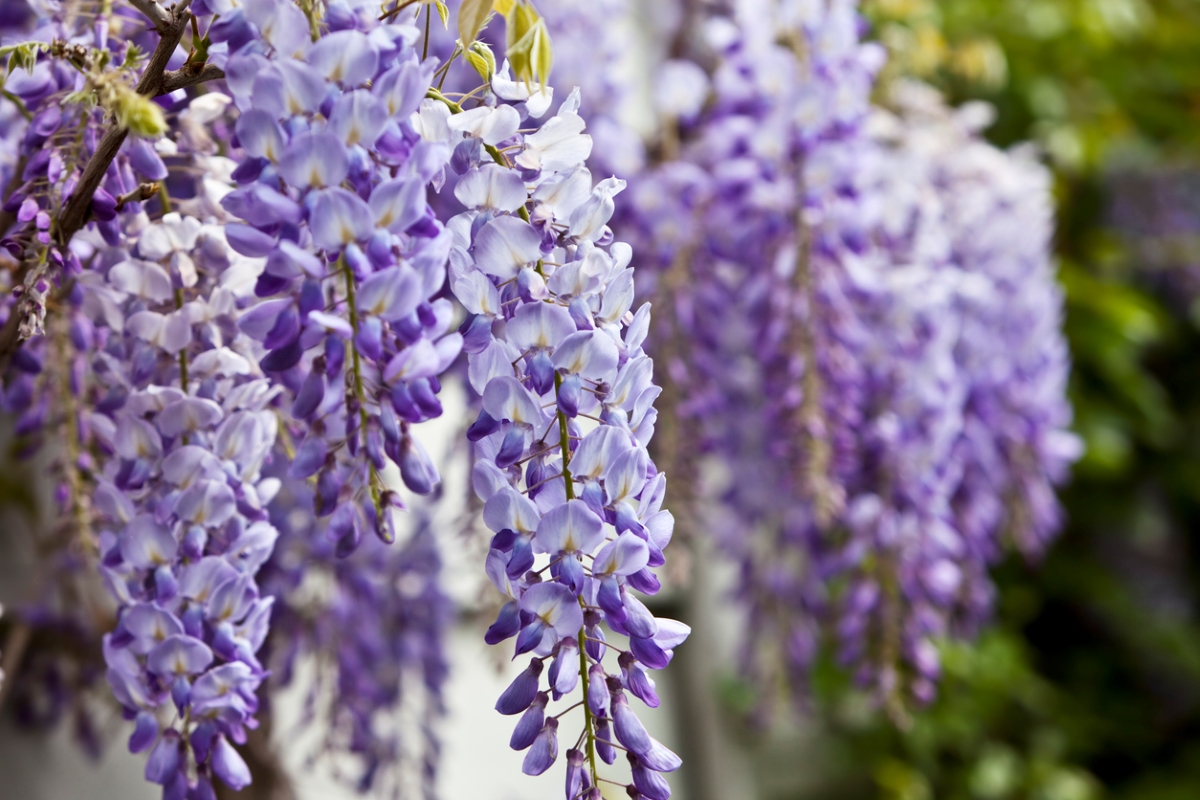
Wisteria, with its waterfalling blossoms of purple, pink, or white, is as toxic as it is beautiful. The seeds and seed pods are the most dangerous, with the ability to poison both small animals and children. So, if you have dogs, cats, or young children, you should seriously consider removing the vines from your property.
Toxic to: Dogs and cats
Side effects: Vomiting (sometimes with blood), diarrhea, depression
35. Yew (Taxus spp.)
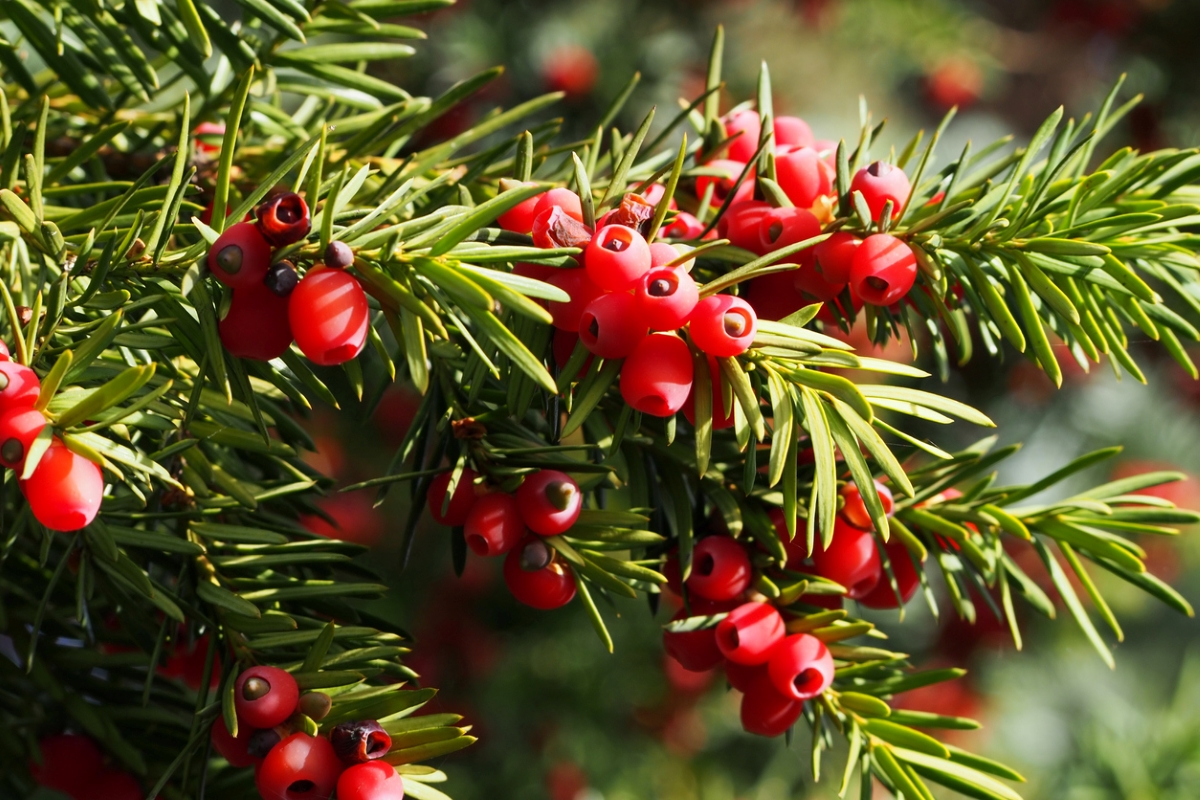
The yew plant’s many good qualities have made it an extremely popular evergreen landscaping shrub. It’s hardy and easy to grow, and it’s attractive when flush with red berries. But the bark, leaves, and seeds of these plants affects the central nervous system of both dogs and cats if ingested. Horses are even more susceptible to poisoning if they munch on the shrub.
Toxic to: Dogs and cats
Side effects: Muscular tremors, shortness of breath, seizures, sudden death from acute cardiac failure
What to Do If Your Pet Ingests a Toxic Plant
If your pet ingests a toxic plant, immediately take the following steps:
- Put your pet in a safe space away from the plant
- Try to determine how much of the plant your pet ingested so you can tell the poison control center
- Do not try to induce vomiting
- Call the ASPCA Animal Poison Control Center at 888-426-4435 for advice
- Follow the steps the ASPCA advises, which may include taking your pet to an emergency vet
